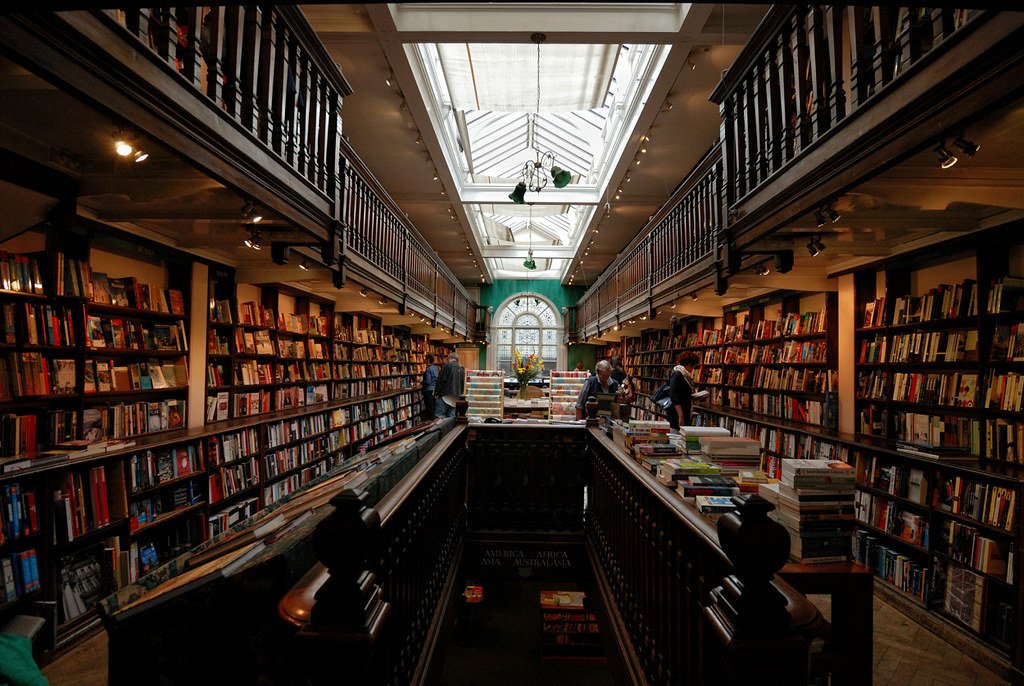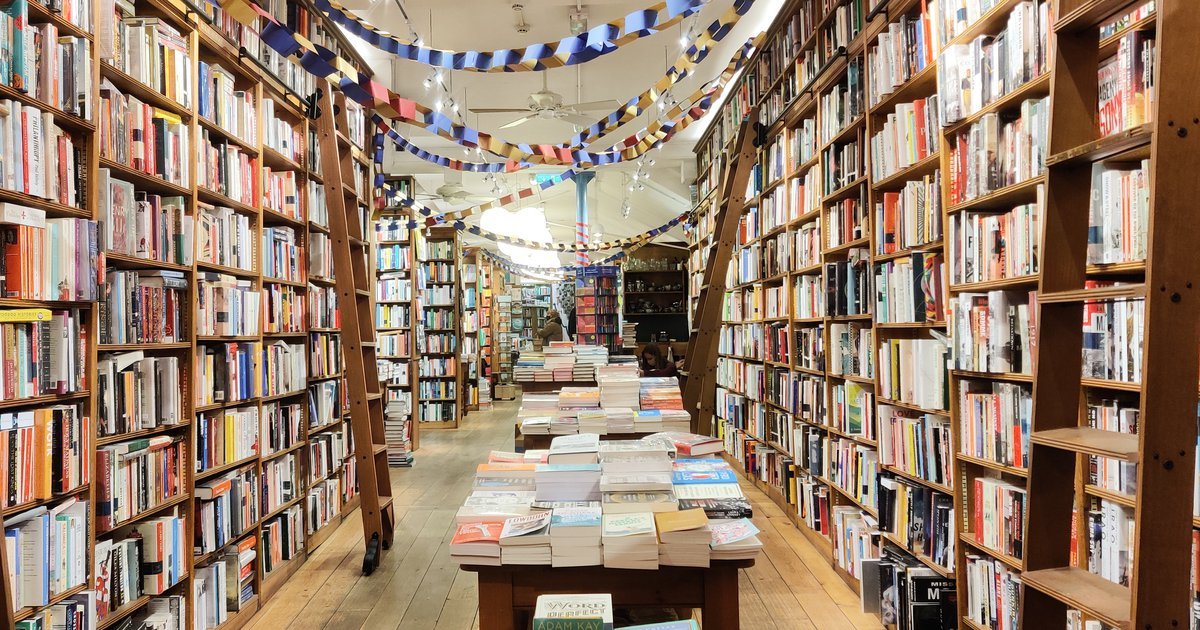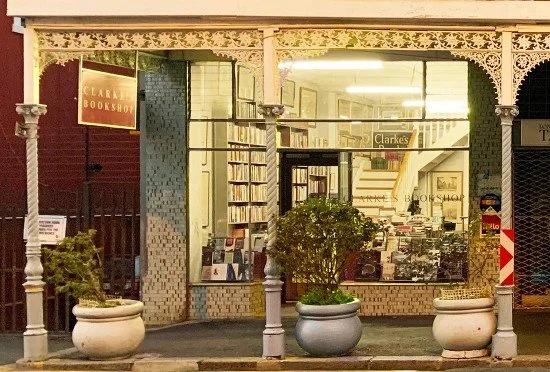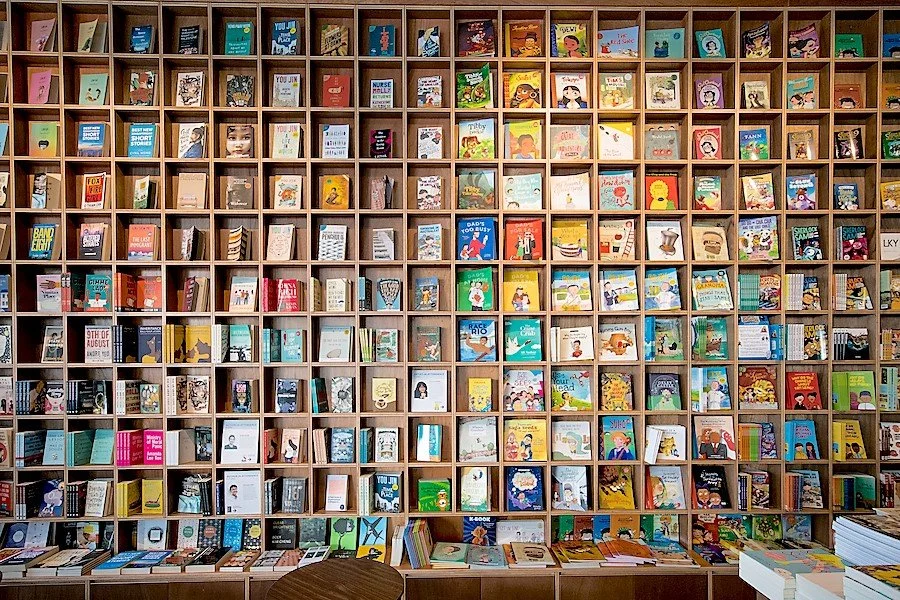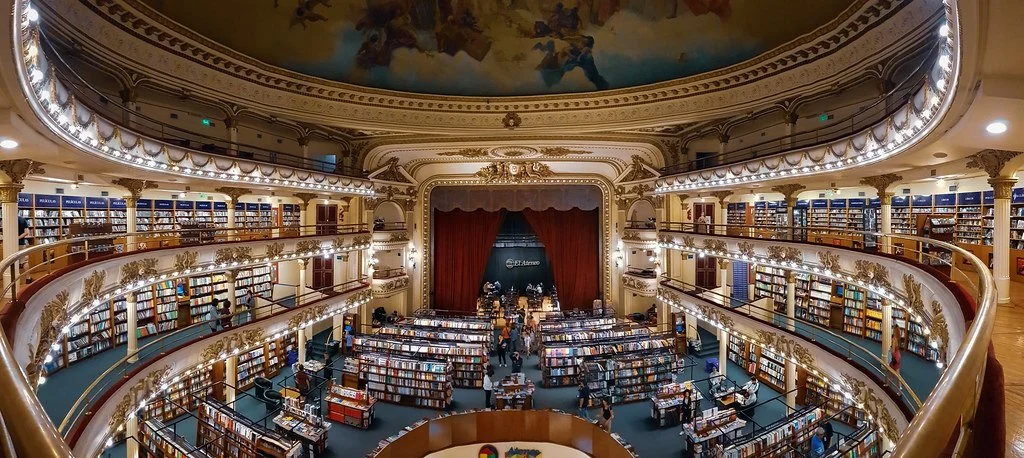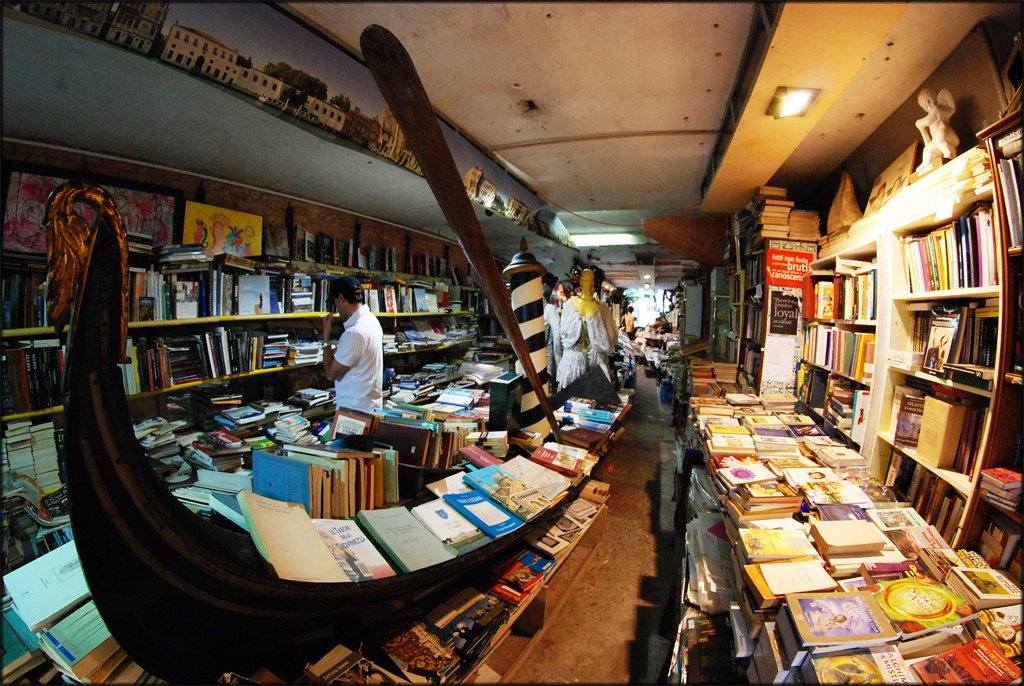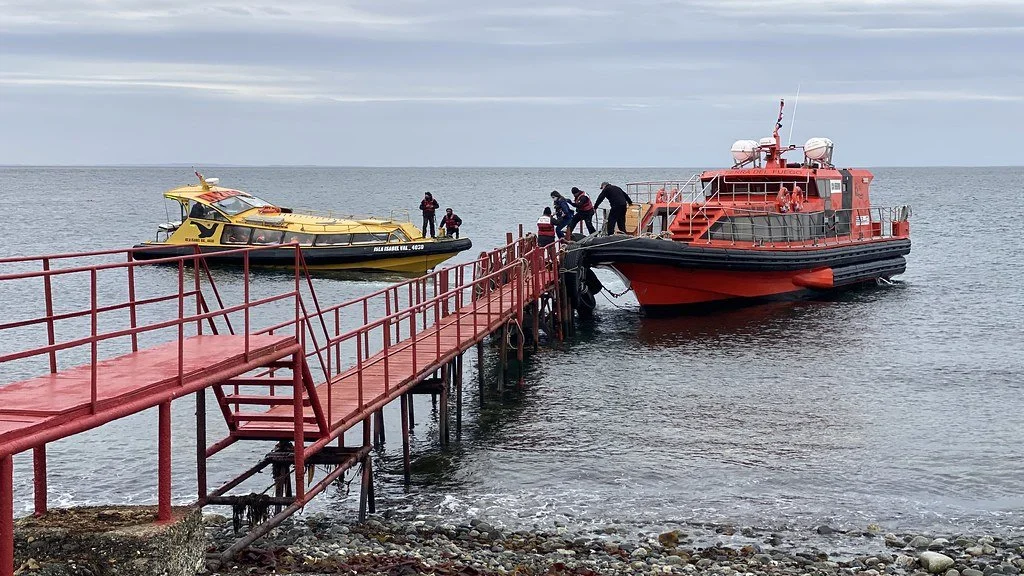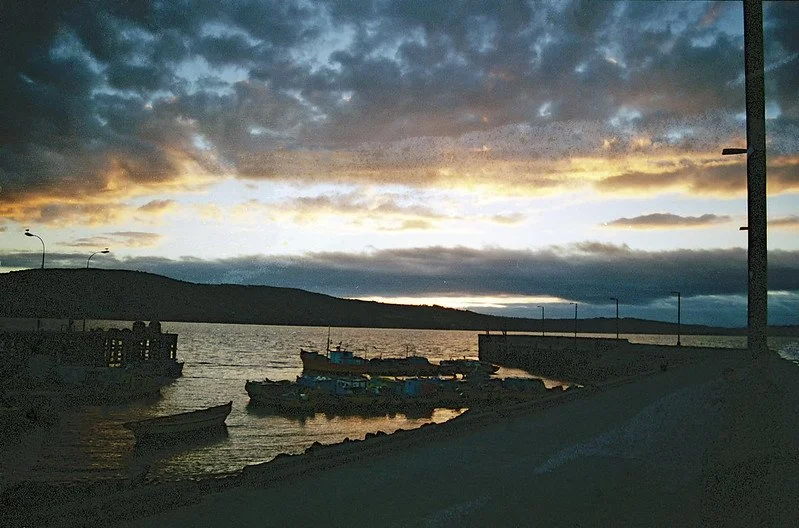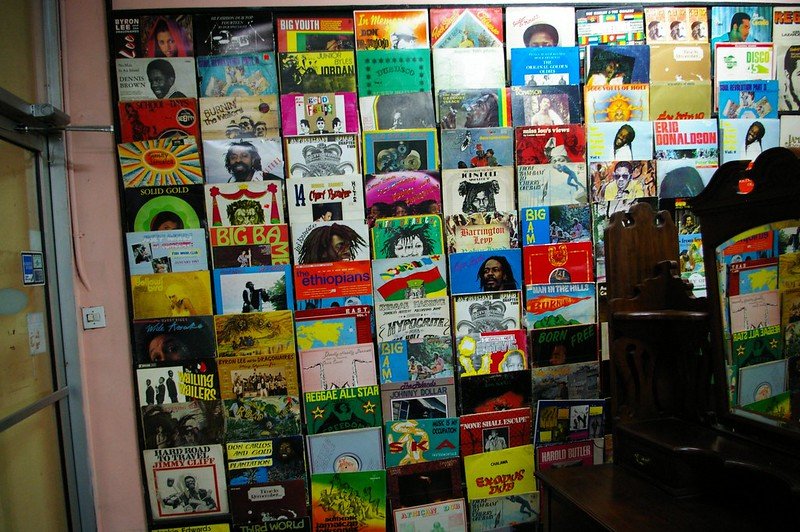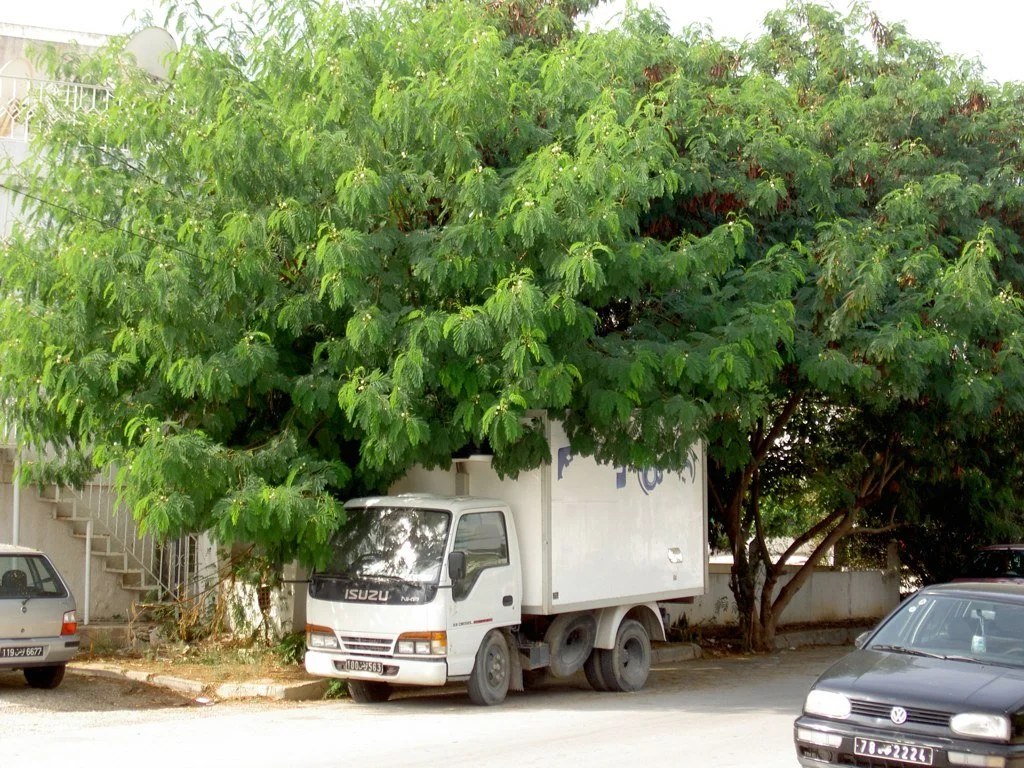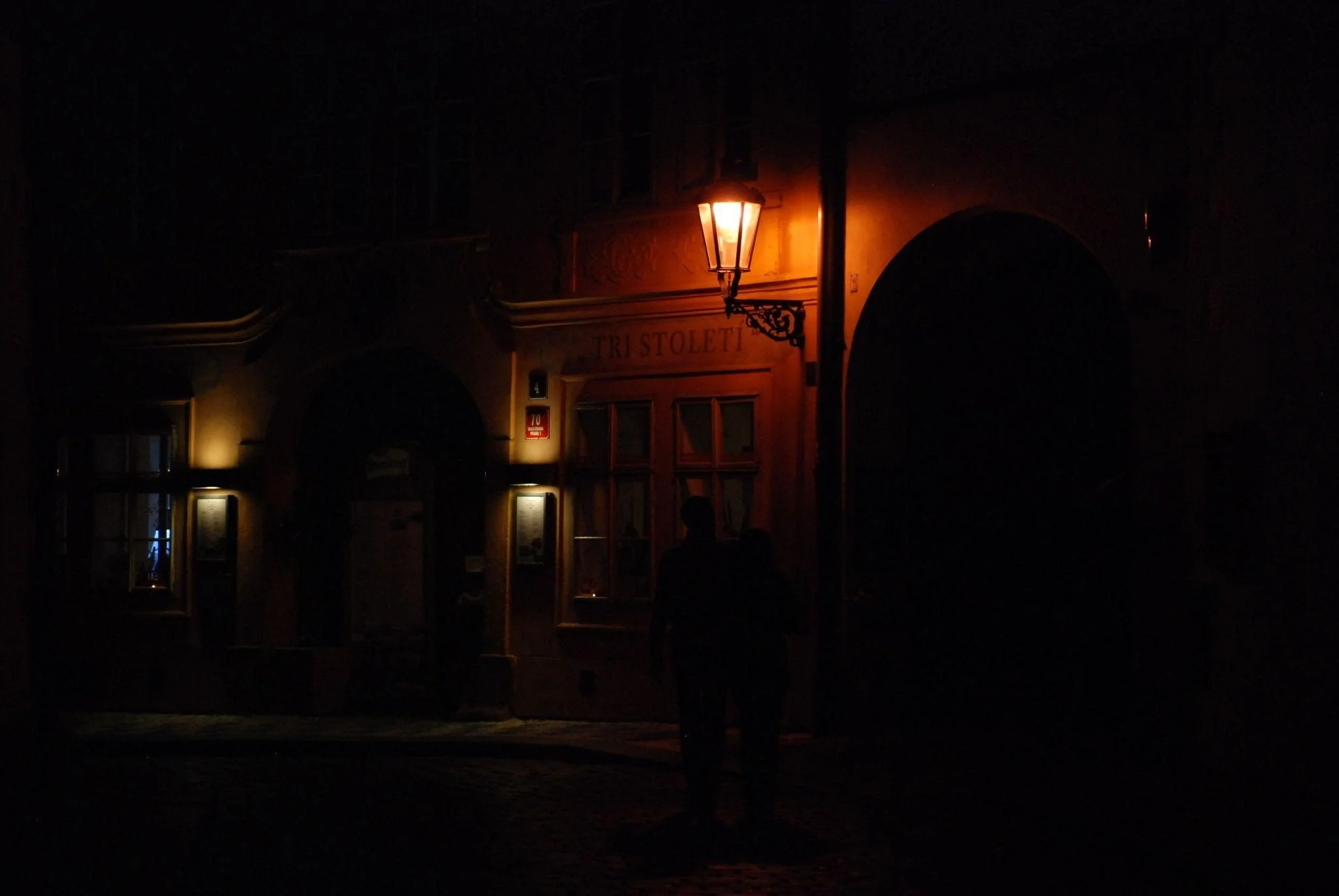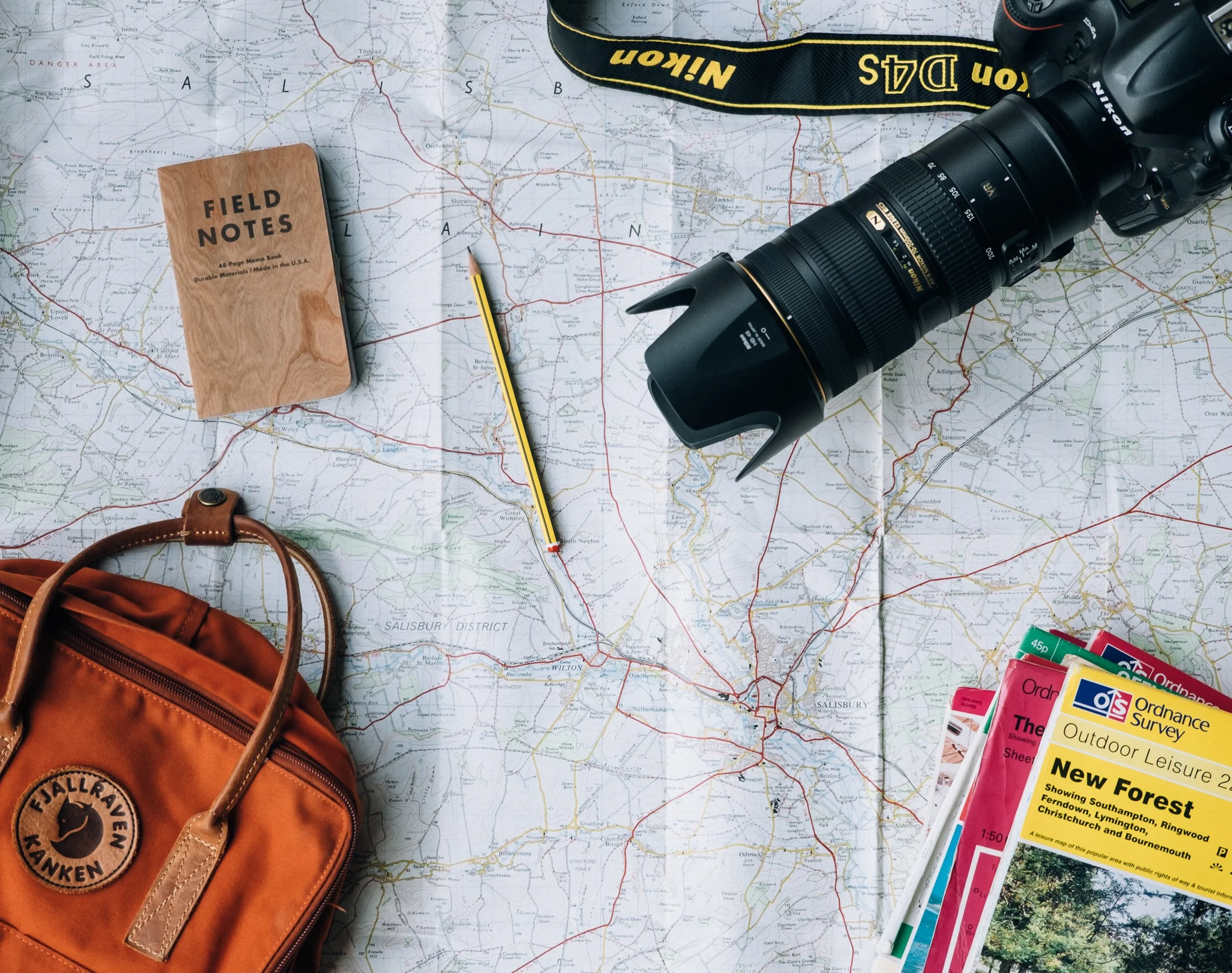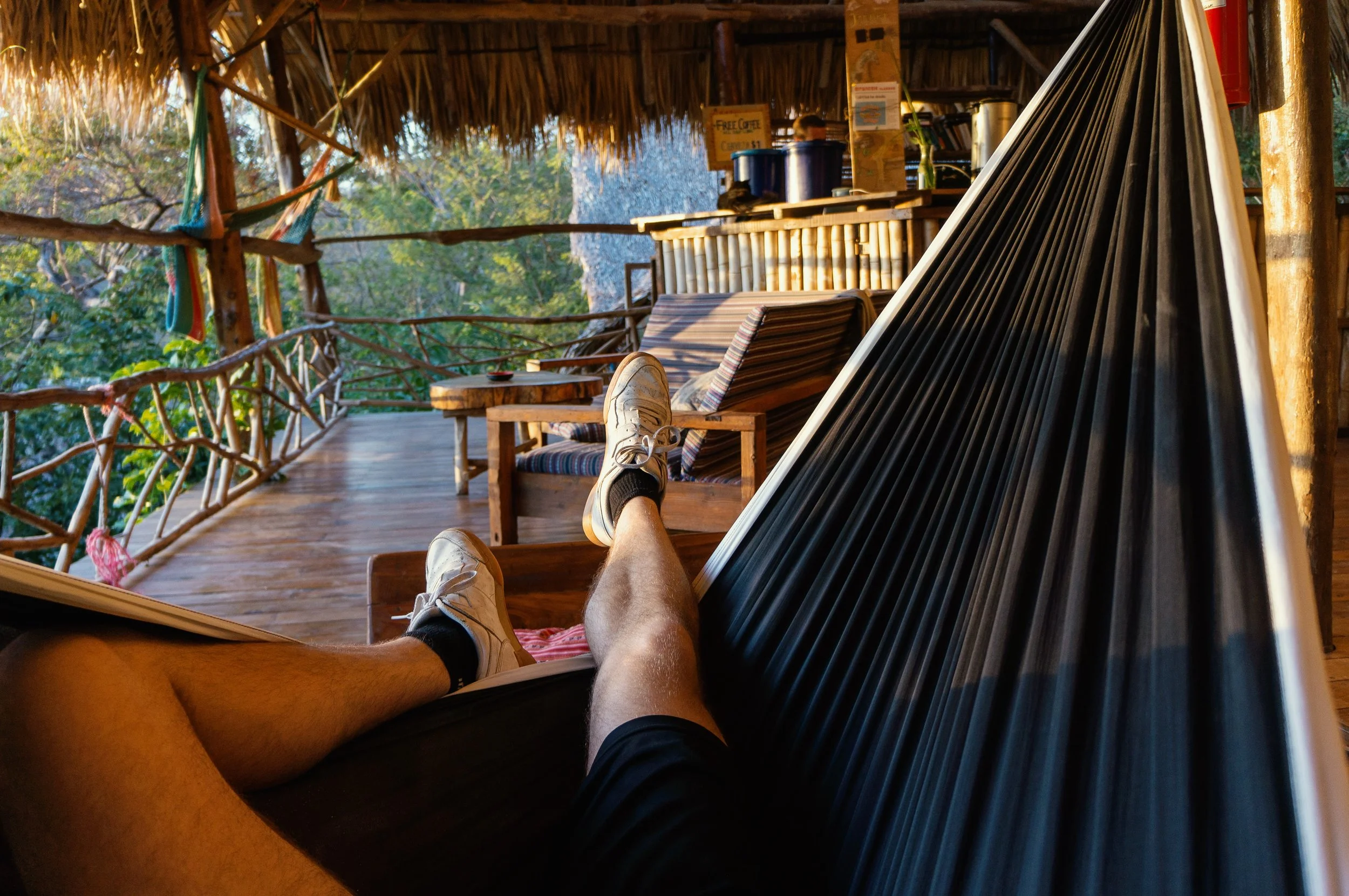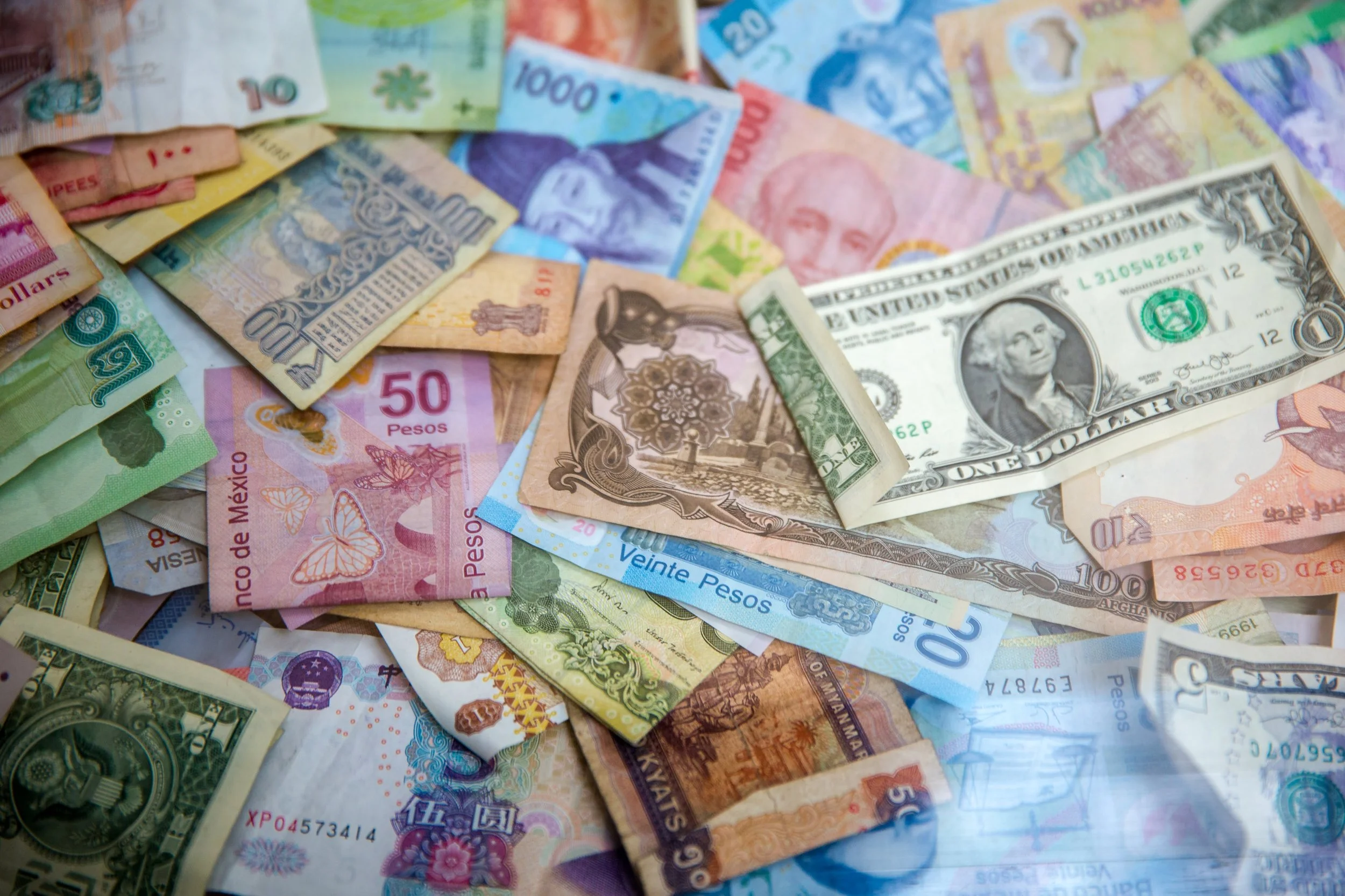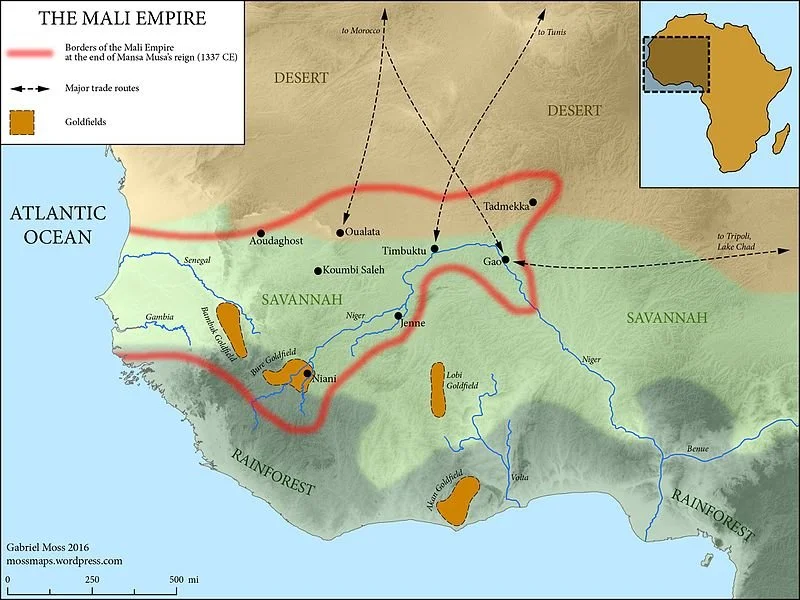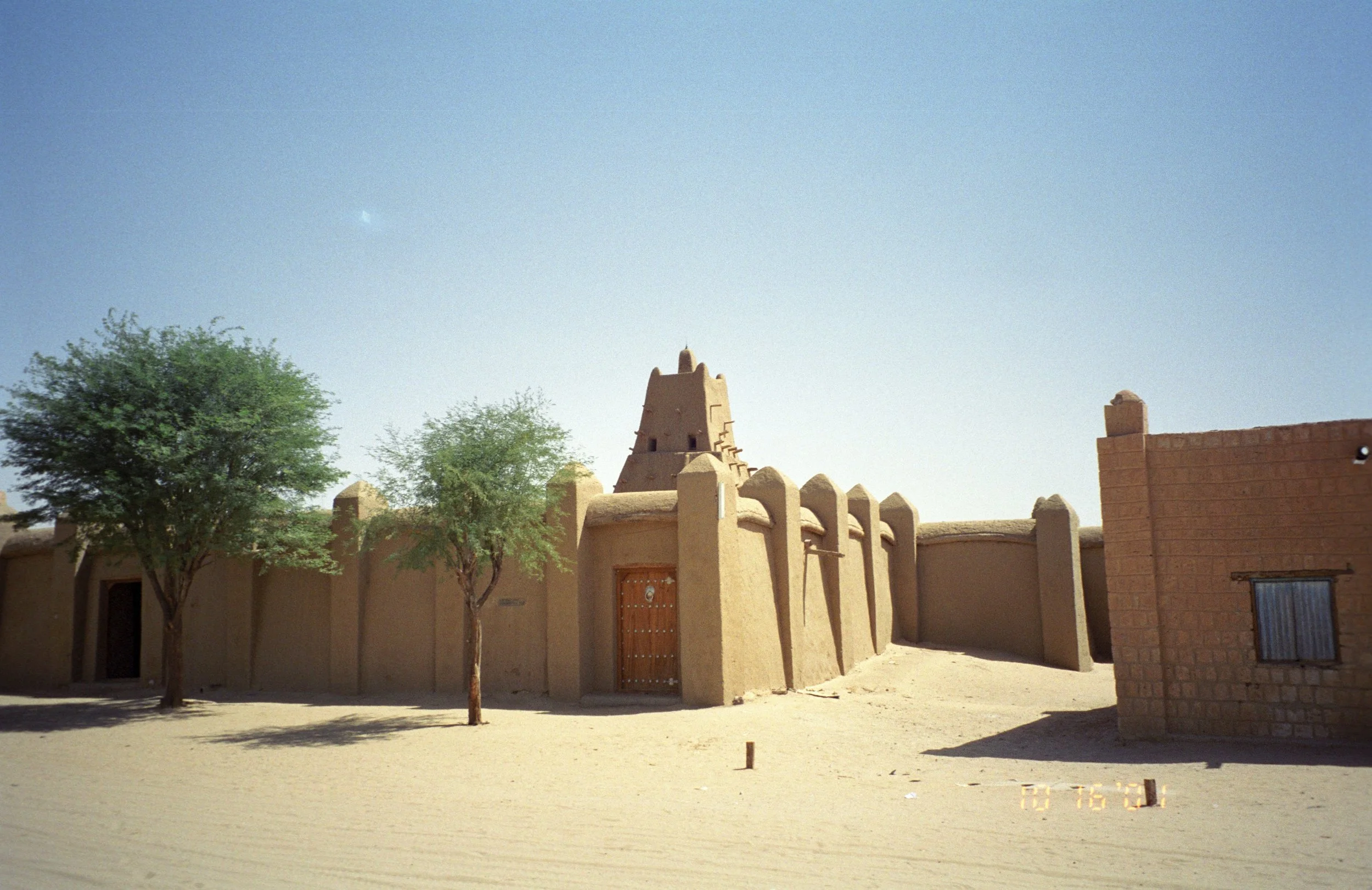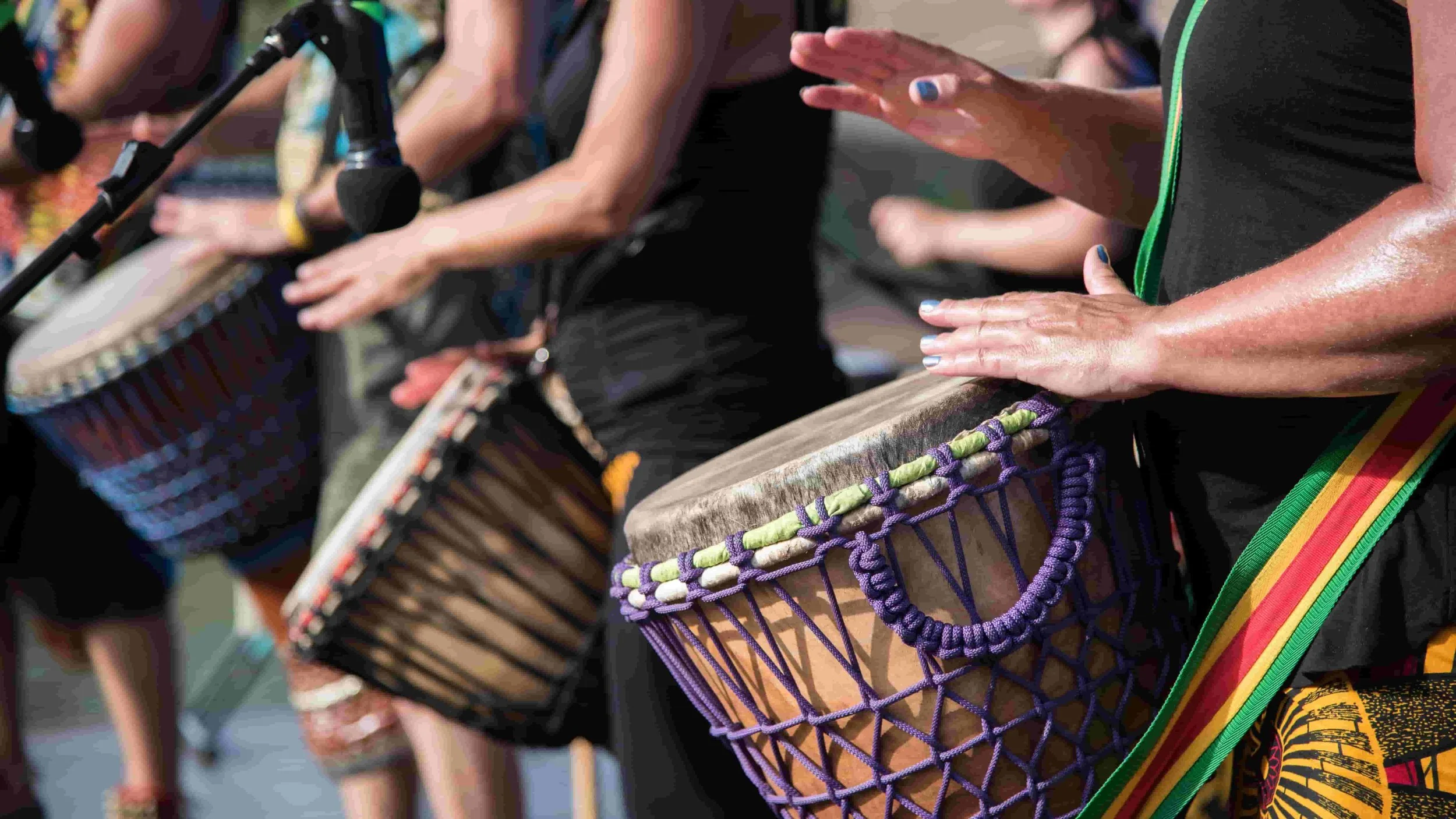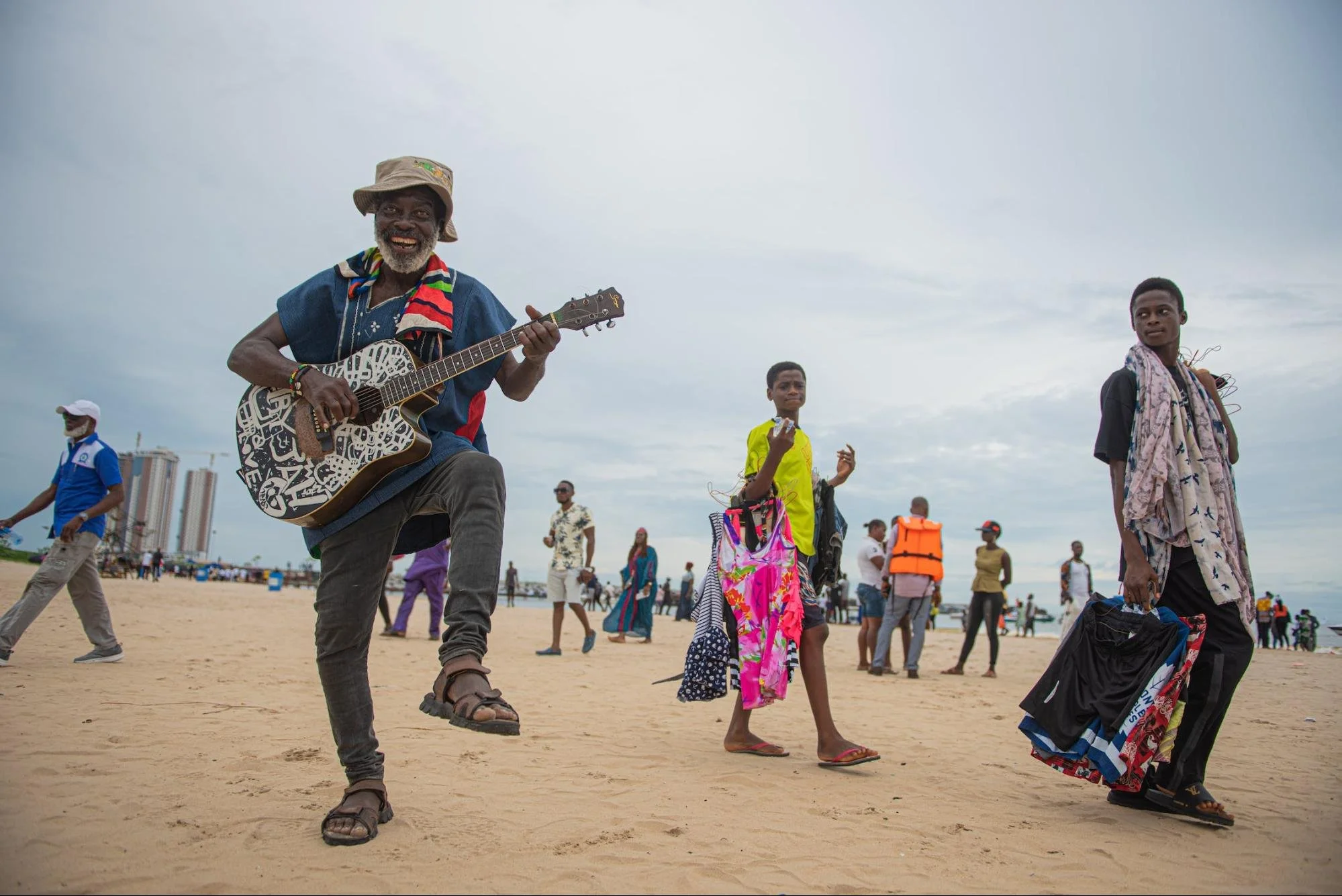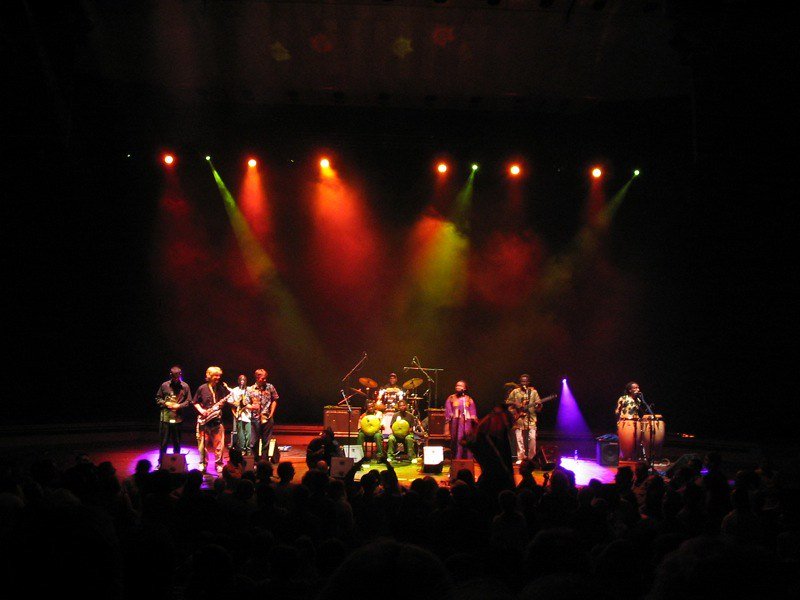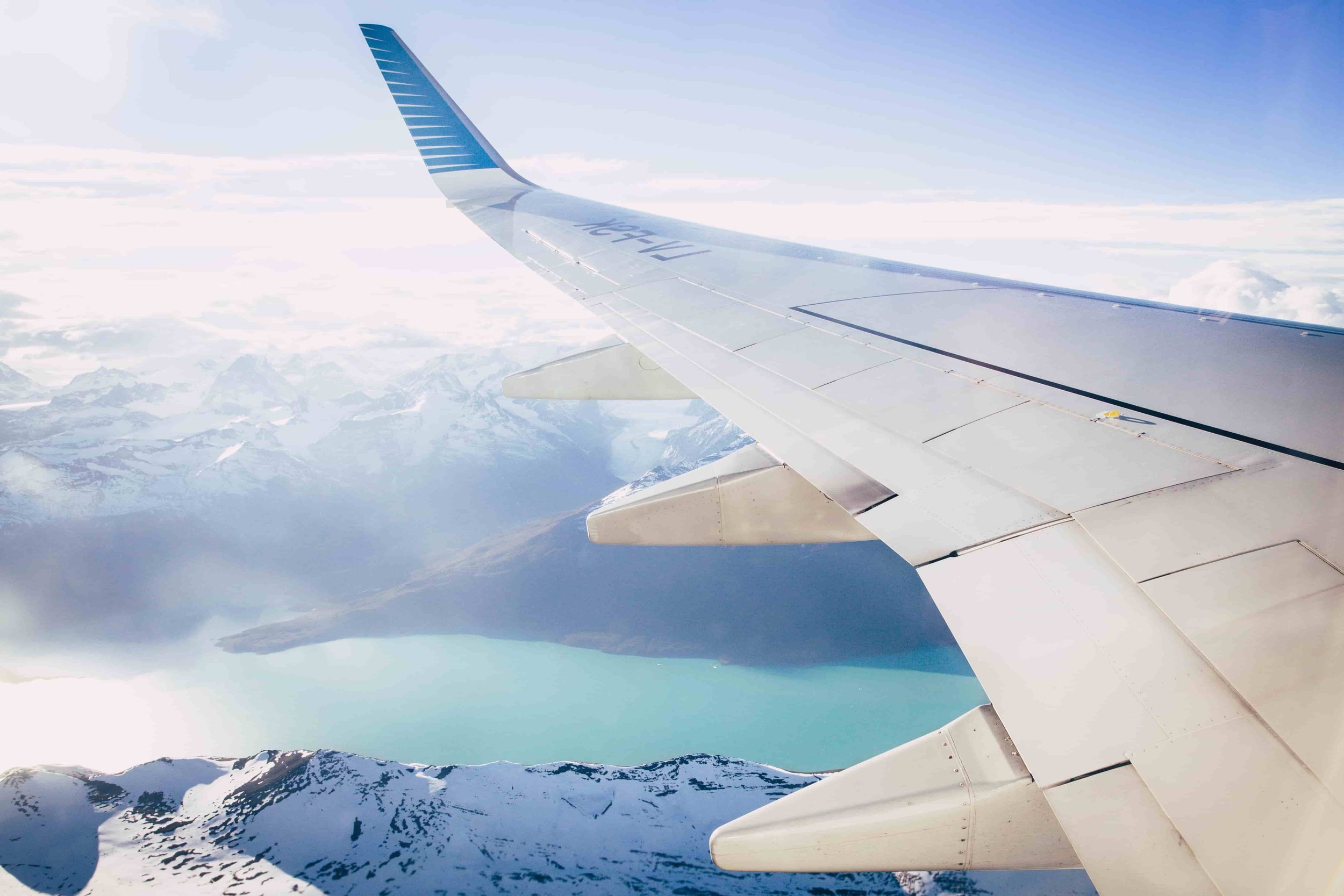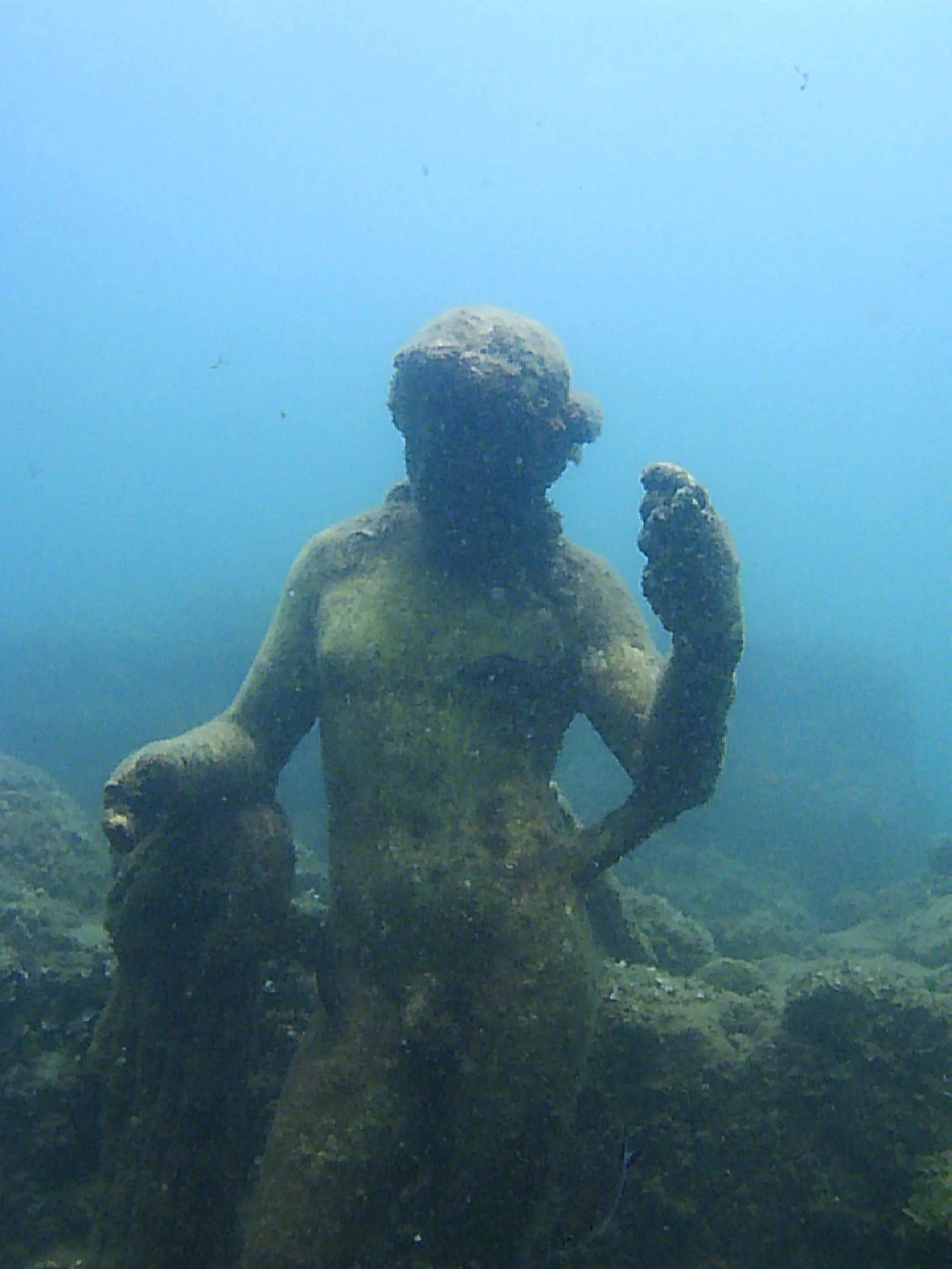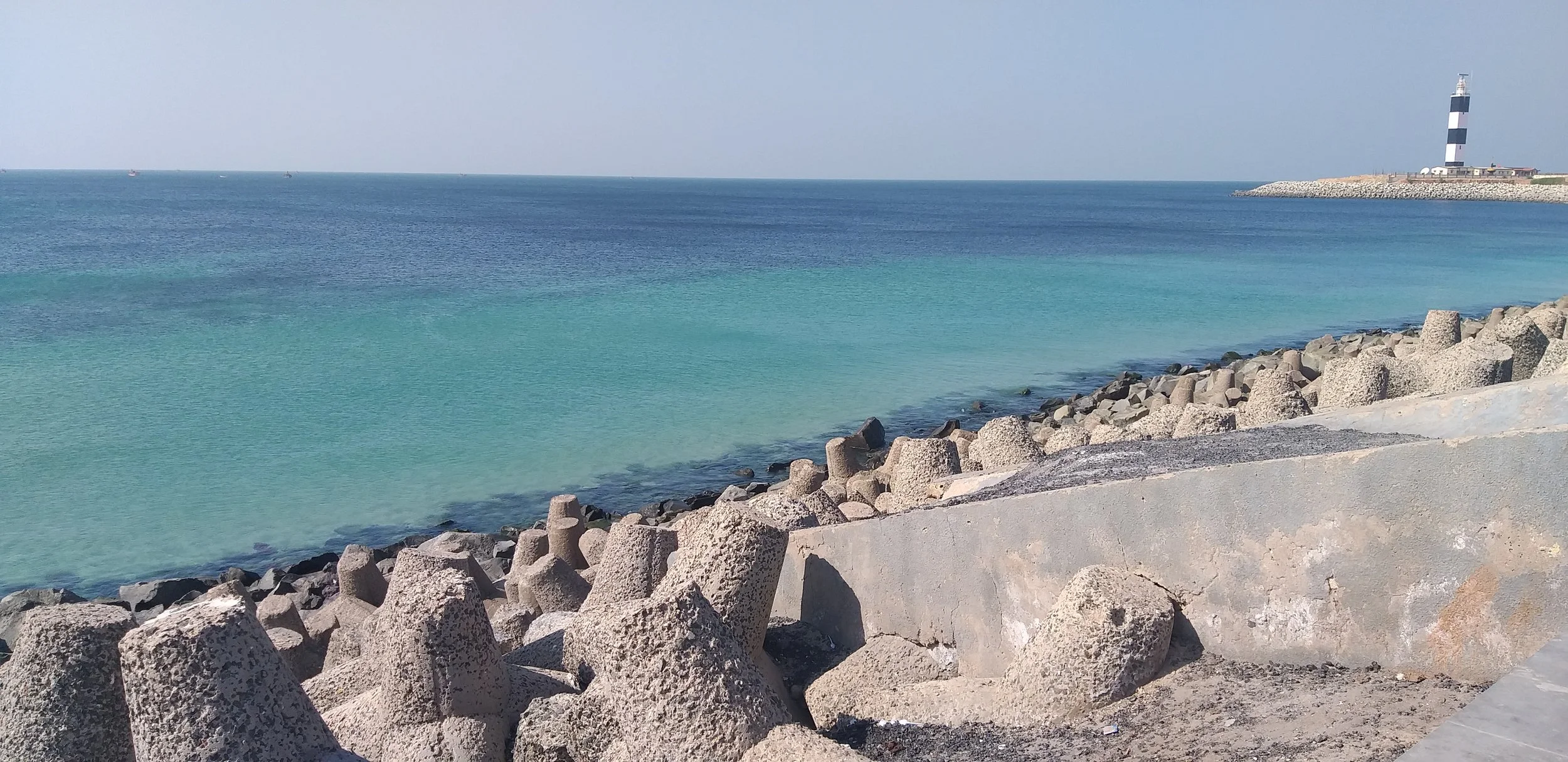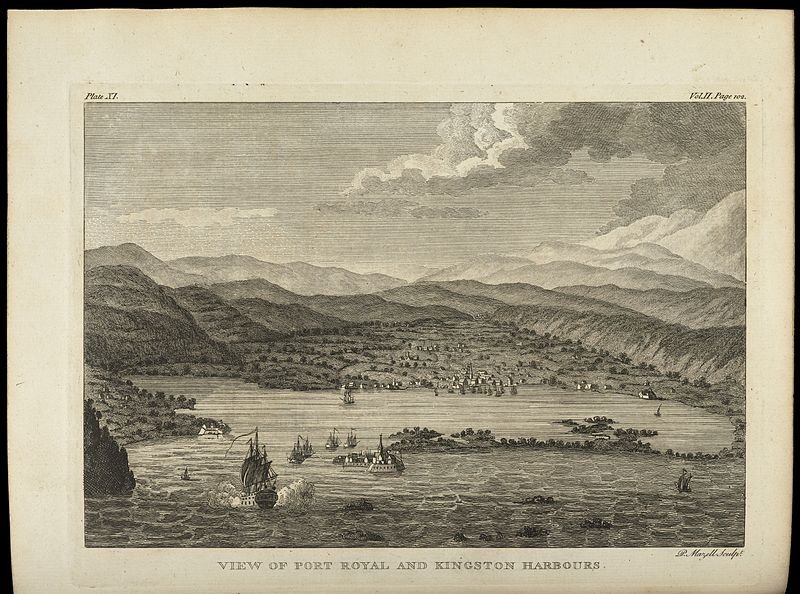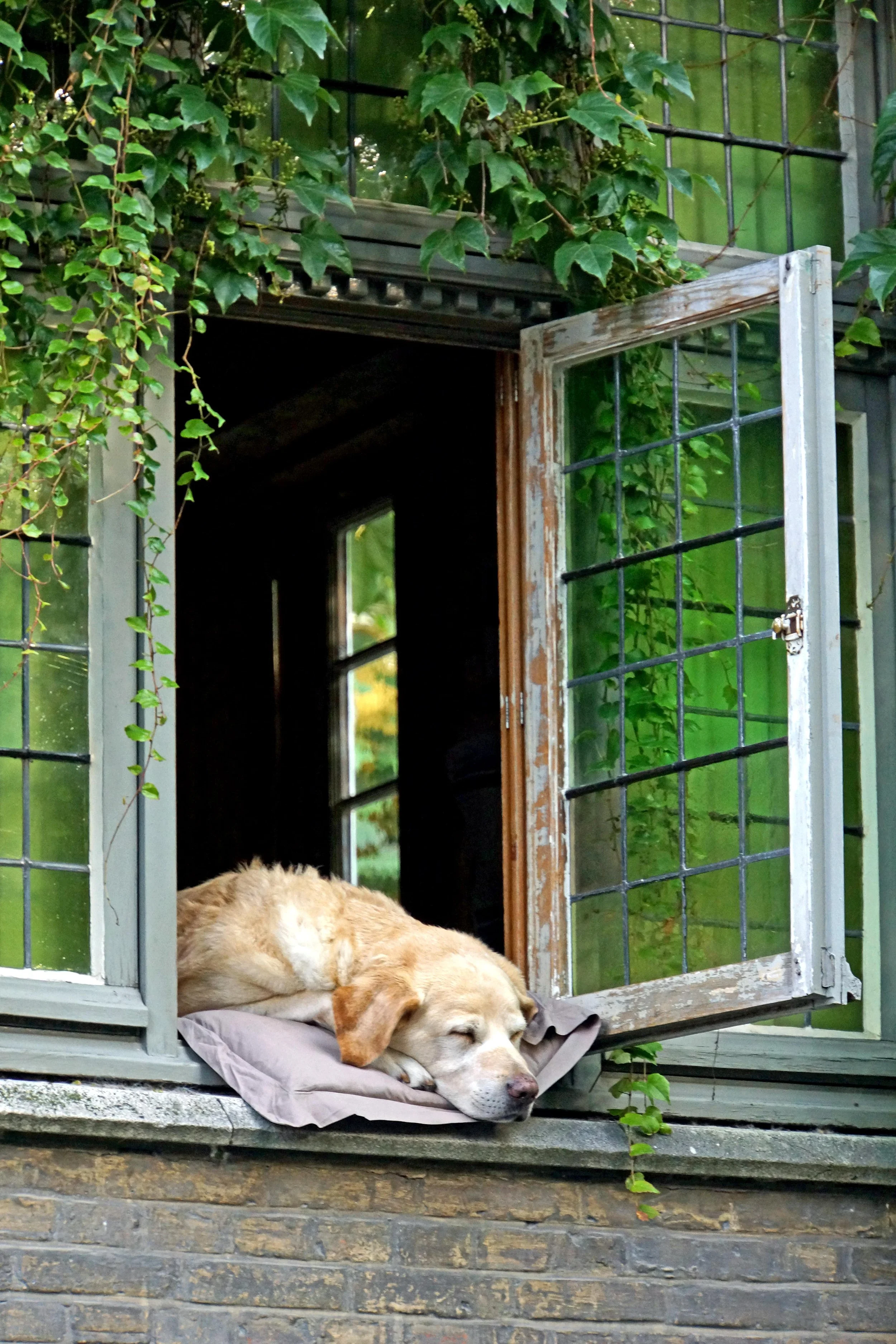Escape Northern Hemisphere hot spells at these chilly locales.
Read MoreGet to Know LGBTQ+ History on the 53rd Anniversary of Pride
53 years after the original Pride parades took place, get to know the historic events that changed the gay rights movement forever.
Read More8 Independent Bookstores From Around the World
From shiny cafés to ancient theaters, here are some of the best independent bookstores to put on your travel list.
With more people ordering books online, it is more important than ever to support independent booksellers. jmm. CC BY-NC-ND 2.0
For those of you that never travel without a book, or always finish the one you bring on the plane, this list of independent bookstores around the world could inspire you to make a reading detour on your next trip. While floor to ceiling bookshelves are the norm on this list, each shop has its own unique character, history, and traditions. Most importantly, they all boast an impressive selection of literature, some showcasing fresh local talent while others house rare ancient gems.
1. Topping & Company Booksellers - Edinburgh, Scotland
Located at the base of Edinburgh’s Calton Hill, Topping & Company Booksellers houses a massive selection of literature. Edinburgh News. CC BY-NC 2.0
The first Topping & Company bookshop opened in the town of Ely back in 2002, but the newest addition to the independently owned chain is one of the largest in the UK. The Edinburgh branch opened in 2019 and houses three floors of handcrafted floor-to-ceiling bookshelves and over 70,000 individual volumes, drawing in readers of all ages and interests. Their first floor has an impressive display of valuable rare and signed editions of various books, while the upstairs areas are split into specific genres ranging from award winning fiction to business and economics. Readers can use the signature Topping sliding ladders to grab a book off of the top shelves, or settle down into one of the many reading nooks scattered throughout the store to enjoy free servings of tea and biscuits. The store also holds a number of events throughout the year, hosting both established authors and rising stars, making it one of the premier literary hubs in Edinburgh.
2. Clarke’s Bookshop - Cape Town, South Africa
The facade of Clarke’s Bookshop on Long Street is favorite amongst locals who have been visiting for decades. Clarke’s Bookshop. CC BY-SA 2.0
Established back in 1957 as a secondhand bookstore by local Anthony Clarke, Clarke’s Bookshop is one of the longest running independent booksellers in South Africa. During the Apartheid Era, reading material was heavily censored by the country’s white supremacist regime and books deemed controversial often had to be smuggled in. Clarke’s was one of the few places that offered customers a wide variety of genres at an affordable price, and continues to live up to this legacy of intellectual tolerance today. While they still carry a large selection of previously used volumes, the shop began to specialize in African and South African specific works in the 1970s and has grown its collection exponentially since then. The store’s focus is to uplift South African stories and authors, with two entire floors dedicated to Africana works written by emerging South African authors. Clarke’s also has an impressive collection of rare texts that are no longer in print, and supply a number of libraries both locally and around the world.
3. Strand Book Store - New York City, USA
The iconic storefront of the Strand Bookstore in New York City has stood there since 1927. Ajay Suresh. CC BY 2.0
This could not be a list of independent bookstores without including Strand Book Store, located in midtown Manhattan. Founded almost a century ago by the then twenty-five year old Ben Bass, the store takes its name from the famous London street frequented by writers like Charles Dickens and William Thackeray, among others. Today, the Strand is proudly the largest bookstore in New York City and carries over a whopping 2.5 million volumes as well as an impressive selection of literary themed merchandise from stickers and magnets to tote bags and onesies. For those on a budget, the pavement outside the store is lined with its famous dollar carts, although finding a reasonably priced gem inside the store is always an option as well. Alternatively, if you have run out of space on your bookshelf at home and are looking to refresh your library, the Strand will also be happy to help provide a new home for your books and will make you an offer in either cash or store credit. From fashion almanacs to the newest fiction bestsellers, the Strand quite literally has it all.
4. Epigram Books - Singapore
The iconic floor-to-ceiling bookshelf in Epigram only contains titles published or written by Singaporeans. Nicholas Tan. CC BY-SA 2.0
In addition to being a bookstore, Epigram Books is also an established independent publishing house in Singapore working to showcase local poets, playwrights, and authors. In fact, the bookstore did not open properly until late 2022 after existing as a pop-up store around the city for a year. Hailed by many as being the best and one of only a few purveyors of Singaporean and Southeast Asian narratives, locals often enjoy browsing their beautiful wooden shelves while enjoying a coffee by in-house baristas. In 2015, they launched the Epigram Books Fiction Prize which takes creative writing submissions from all over Southeast Asia. All of the books shortlisted for the annual prize are always made available front and center in the store, along with an incredible collection of literature published by other Singaporean houses. Epigram’s tagline, “Hold Singapore in Your Hands,” speaks to its goal of creating a space in the literary world for local talent—one of the tables in their store is reserved for authors and artists to chat with readers and help visitors find inspiration amongst the shelves.
5. El Ateneo Grand Splendid - Buenos Aires, Argentina
El Ateneo Grand Splendid is located in a converted theater built over a century ago. Lorena Vb. CC BY-NC-SA 2.0
For those of you who love music just as much as books, El Ateneo Grand Splendid is the perfect destination. The building was first opened in 1919 as a theater for ballet, opera, tango, and musical performances with a seating capacity of over 1,000, but eventually became a bookstore in 2000 after a short stint as a recording studio and radio station. Many have named this incredible space “the world’s most beautiful bookstore” because of its intricate frescoes and gilded bookshelves, but the atmosphere inside El Ateneo is as warm and welcoming as your neighborhood bookshop. The café built on the stage of the grand hall offers coffee and pastries to visitors who simply want to sit back and admire the emporium’s Latin architecture, while those looking to purchase have access to thousands of books, CDs, DVDs, and more. While the space welcomes over a million people every year, the orchestra and mezzanine areas as well as the luxury boxes have been converted into quiet reading spaces where you can enjoy Argentina’s rich literary tradition and history.
6. Wuguan Books - Kaohsiung City, Taiwan
Navigating Wuguan Books can be tricky given the almost total lack of light in the store. Jonny Diamond. CC BY-SA 2.0
If you have ever been told not to judge a book by its cover, this store makes it hard to do much else. Located in an art center that used to be a warehouse, Wuguan Books immerses visitors in almost complete darkness with only dim yellow lights illuminating the covers, while a small handful of reading lights are scattered through the space. The design was carefully thought up and executed by award winning architect Chu Chih-kang, who wanted the books to feel as if they were floating, and fully committed to the atmosphere by using thick carpets to absorb the sounds of footsteps and dark shelves that melt into the background. The goal was to allow people to really focus on the books without any other sensory distractions, so visitors are also required to follow rules which prohibit flash photography or flashlights. The store also houses a coffee bar and sells a variety of other merchandise, but is only accessible to those over the age of 18 due to the sensitive topics covered by some of the books. In an age where Instagram worthy aesthetics are all the rage, the inability to digitally document this space only adds to its intimate setting.
7. Another Story Bookshop - Toronto, Canada
The colorful window display of Another Story showcases a small fraction of its diverse selection. Arden Wray. CC BY-NC-ND 2.0
Just over thirty years ago, local Torontonian Sheila Koffman founded Another Story Bookshop in the basement of a downtown building with the goal of putting “diverse books into diverse hands.” She sadly passed away in 2017, but her efforts to provide a platform for authors who were queer or people of color live on in the store’s new location in the Roncesvalles Village neighborhood and through its loyal employees. The prevailing theme of the store is social justice, which becomes evident from its wide selection of both fiction and non-fiction for young readers and more seasoned ones. In fact, half of the store’s inventory caters specifically to children, and they also provide books to a number of local schools. The staff put in effort to locate stories and titles that are not available elsewhere in order to ensure that marginalized narratives, including and especially those of indigenous peoples, are heard. The staff’s hard work to ensure that every book they carry has a message that is, in their best judgment, the best way to pay tribute to Sheila’s founding vision.
8. Libreria Acqua Alta - Venice, Italy
All of the books in Libreria Acqua Alta are stored in waterproof containers to keep them dry during high tide. a2zphoto. CC BY-NC-ND 2.0
Books and water typically do not mix, but the staff at the Libreria Acqua Alta in Venice have found a solution. The shop is located on an island in the middle of one of the city’s countless canals, and all of its precious books are stored in various waterproof bins, bathtubs, and even a full-sized gondola. True to its name which translates to “Library of High Water”, this innovation provides a safe sanctuary when the tide rises and water floods to a few inches in height. The store is fantastical in every way, with giant leather-bound volumes stacked haphazardly against the wall, ships’ wheels and other maritime gadgets scattered across the piles, and an entire staircase made of books. For those looking to make a literary purchase, the store has an amazing inventory of both new and secondhand books in a variety of languages as well as a large collection specifically about Venice. On the other hand, the store also offers a number of vintage souvenirs and is home to a handful of friendly cats for those who simply want to experience another bookstore heralded as among the most beautiful in the world.
Tanaya Vohra
Tanaya is an undergraduate student pursuing a major in Public Health at the University of Chicago. She's lived in Asia, Europe and North America and wants to share her love of travel and exploring new cultures through her writing.
6 Must-See Islands off the Coast of Chile
Traverse the natural gems and explore the historical sites of Chile’s outre-mer.
Penguins off the coast of Chiloe Island. Mary Madigan. CC BY 2.0.
One of the westernmost countries of South America, Chile has gained fame for its gorgeous mountains and fjords, its delicious street cuisine, the integral place futbol has in its people’s everyday life, and perhaps even its complex political history. The distinct cultural and travel experience the country offers does not apply only to its mainland, but also to the islands that surround it. In fact, Chile’s islands house some of the most individual and exclusive travel experiences and institutions:
1. Isla Magdalena
Off the coast of Isla Magdalena. Iamblukas. CC BY 2.0.
Isla Magdalena’s lush landscapes are home to everything from the circa 120,000 Magellanic penguins characteristic of southern South America, the National Monument for Penguins that explores and explains the members of this colony, and a magnificent view of the Strait of Magellan discovered by Portuguese explorer Ferdinand Magellan. The Isla Magdalena Lighthouse, another landmark, also rests on the island and contains many exhibitions that detail its history and traditions. Travel to Isla Magdalena by public ferry or private speedboat (for about 2 hours) after a fruitful day on the Chilean mainland; the island is 608 sq mi.
2. Robinson Crusoe Island
A view of Robinson Crusoe Island’s mountains. Ashley Basil. CC BY 2.0.
Robinson Crusoe Island’s name comes from the titular Daniel Defoe protagonist and explorer who travels across the sea to a deserted island. Certainly, all visitors feel like explorers on Robinson Crusoe Island. Guests can snorkel or scuba dive along the island’s coral reefs, observe shipwrecks scattered across its coast, birdwatch, hike in the area’s luscious rainforests, visit ruins left from plundering pirates, and enjoy the local cuisine, especially the lobster. You can even partake in day-long fishing trips to score fresh lobsters! A ~2 hour flight from Santiago or an hour-long water taxi journey drops guests off at this adventure-filled island; the island is 18.5 sq mi in area.
3. Chiloé Island
A view from Ancud on Chiloé Island. Ik T. CC BY 2.0.
Chiloé Island’s landscape defines it: the Chiloé National Park highlights much of this breath-taking landscape with green terrain, rivers, lakes, and stunning forests. For those further intrigued by the island’s natural beauty, horseback riding around the island quenches the explorer’s thirst. But this island is not only a place of natural beauty; history remains an important part of Chiloé Island culture. The churches of Chiloé, mostly built in the 17th century and showcasing Spanish colonial design, are monuments to the island’s rich history. The Ancud Regional Museum (Museo Regional de Ancud) also puts much of the island’s history, its mythology, and its indigenous residents under the spotlight. As with many other Chilean islands, water sports like kayaking and fishing also contribute to the visitor experience. A circa 30-minute ferry ride across the Canal de Chacao drops guests off on Chiloé; the island is 3,241 sq mi.
4. Isla Grande de Tierra del Fuego
Snow capped mountains of Isla Grande de Tierra del Fuego. James St. John. CC BY 2.0.
South America’s largest island, Isla Grande de Tierra del Fuego, is part of the Tierra del Fuego archipelago off the coast of the southernmost tip of South America. A ~2 hour ferry ride across the Strait of Magellan drops visitors off at this island first dubbed “Land of Smoke” by Ferdinand Magellan. Walk the footsteps of explorers like Ferdinand Magellan and Charles Darwin on Isla Grande de Tierra del Fuego as you immerse yourself in the island’s spectacular flora, which includes many species of trees like the beech and conifer, and fauna the fauna of Parque Pinguino Rey (King Penguin Park) and the foxes, flamingos, and condors found all around the island’s mountains; the island is 18, 530 sq mi
5. Navarino
A view of the Dientes de Navarino Mountains. Dimitry B. CC BY 2.0.
Navarino, another island that is far south of the Magellan Strait, is a worthwhile travel destination for outdoorsy adventurers. Hikers will enjoy walking among the island’s snow capped mountains and fishers can discover a multitude of rivers and even high-altitude lakes. One of the most beautiful routes for active visitors is the Dientes de Navarino (Teeth of Navarino) Trek. This somewhat frightening name refers to Navarino’s mountains through which many travelers enjoy hiking. The culturally inclined can visit Puerto Williams, the island’s only town and the past residence of indigenous Yaghan people. Puerto Williams’ museums offer insights on the isle’s Yaghan past and its weighty and resonant history. Access to Navarino is available by a 30-minute boat ride from the port of Ushuaia; the island is 35.7 sq mi.
6. Riesco Island
A view of the Fitzroy Canal from Isla Riesco. Z_thomas. CC BY-SA 3.0.
Riesco Island’s must-see features range from Patagonian ranches to historical coal reserves. The bleating sounds ring across the island, while its cattle fields are still dominated by gauchos, or South American cowboys, and remain a sight to behold for those visitors who crave a distinctive cultural experience. The island, one of the largest islands in Chile and accessible from Patagonia through a 30-minute boat ride across the Fitzroy Canal, is also known for its coal reserves; in fact, coal mines such as the Invierno (winter) Mine, Magdalena, Elena, and Josefina are historical locations of note. Riesco sightseers should also watch out for glaciers lining Riesco’s coasts; the island is 1,970 sq mi.
Su Ertekin-Taner
Su Ertekin-Taner is a first year student at Columbia University majoring in creative writing. Her love for the power of words and her connection to her Turkish roots spills into her satire, flash fiction, and journalistic pieces among other genres. Su hopes to continue writing fearless journalism, untold stories, and prose inspired by her surroundings.
From Mento to Reggae: Jamaica's Vibrant Music Scene
Captivating melodies, profound stories, and deep cultural ties have woven a musical tapestry unique to the Caribbean nation.
Reggae concert. Image by Yardie.
In the early 1900s, Jamaican music underwent a transformative journey influenced by myriad cultural expressions. Rooted in the rich traditions of African folklore, Anansi stories of the eponymous trickster/spider god Anansi took center stage, captivating listeners with hypnotic chants to enchanting stories. Over time, these stories evolved into the rhythmic beats of digging signs sung by field workers, resonating with the experiences and unity of working-class Jamaicans. During the same period, ring tunes’ for kids and dancing tunes’ joyous melodies and communal spirit became an integral part of the music scene, encouraging lively community dances and bringing people together. Jamaica’s rhythmic interplay and narrative-driven art, the cultural influences of Anansi stories, digging sings and ring tunes played a pivotal role in shaping the evolving sounds of Jamaican music, laying the foundation for the genres that would continue to capture the people’s triumphs, struggles, and celebrations. The echoes of these musical styles reverberate from the early 1900s Jamaican music landscape, paving the way for the rhythmic revolutions of mento and ska and the profound social commentary of rocksteady and reggae from the 1940s-1960s.
Mento: A Time Capsule of Jamaican Life and Resilience
A painting of mento drummers. Mento2011 Fallmouth Jamaica
Born from a fusion of rhythms brought to the West Indies by enslaved West Africans, European musical traditions, and the Indigenous sounds of Jamaica's Taino people, the late 1940s birthed a vibrant expression of everyday life: mento. Mento vividly captured the spirit of Jamaican communities, offering a window into their triumphs and challenges through lively melodies and infectious rhythms, played on instruments like the banjo, guitar, and maracas. It became a testament to the indomitable spirit of the Jamaican people, celebrating their traditions and cultural identity.
Mento’s most outstanding achievement was laying the foundation for future genres. Specifically, its rhythms and energy paved the way for the revolutionary beats of ska in the 1950s, while its resilience and vibrancy found their way into the iconic reggae anthems, symbolizing Jamaican identity worldwide. Through mento, the rich roots of Jamaican folk music intertwined with the heritage of diverse influences, deciding with finality that music is for the people. Today, mento continues to captivate audiences connecting them to the vibrant past of the island.
Fishbone playing in Los Angeles.
Ska: A Joyful Revolution with a Powerful Beat
In the transformative 1950s, ska emerged as a genre that reflected the social and political upheaval of the time and became a catalyst for change. With its energetic tempo, infectious rhythms, and the unmistakable resonance of brass instruments, ska created a pulsating sound that swept a generation. Inspired by Jamaican mento and Trinidad and Tobago’s calypso, ska was a jubilant call to unity, a musical expression of the collective yearning for a better world.
As the vibrant ska beats enveloped the airwaves and dancehalls, it carried a profound message. Through its lyrics, ska shed light on the harsh realities of poverty, inequality, and discrimination that plagued Jamaican society. It served as a powerful voice, amplifying the concerns and struggles of the marginalized and disenfranchised. Yet, amidst the social challenges, ska embodied a spirit of resilience, hope, and determination. It became a unifying force, inspiring people to unite, rise above adversity, and strive for a more inclusive and equitable future.
Crowd at a live music event. Image by Yardie.
Rocksteady: The Soulful Bridge to Reggae
Between the exciting ska era and the rise of reggae lies the soulful interlude of rocksteady, a genre that left an indelible mark on Jamaica's musical landscape. In the mid-1960s, as the country underwent significant social and political shifts, among the most significant being political independence from the British Empire, rocksteady emerged as a musical bridge, connecting ska’s exuberance with reggae’s even more profound social commentary.
Rocksteady's distinct sound captivated listeners with smooth, melodic rhythms. Influenced by American soul and rhythm and blues, the genre introduced a slower tempo and more introspective grooves, reflecting the changing landscape of Jamaican society. Historically, rocksteady emerged when Jamaica was transitioning from its colonial past to a newfound sense of cultural identity and political consciousness. The smooth and soulful melodies of rocksteady expressed the Jamaican people’s evolving aspirations and struggles. It provided a platform for introspection, offering a sanctuary of musical solace amidst social and political transformations. Some rocksteady songs went on to become hits outside of Jamaica, as with ska, helping to secure the international base reggae music has today.
Reggae: A Cultural Anthem of Love, Unity, and Social Justice
The wall of records. Christina Xu
Undoubtedly, the most renowned and internationally celebrated genre of Jamaican music is reggae. Born in the late 1960s against the backdrop of a dynamic Jamaican society, reggae emerged as a powerful and transformative force, both musically and culturally. It was a fusion of various influences, including mento, ska, rocksteady, R&B, and the religio-liberationary message of Rastafari, which came together to form a genre with a distinct sound and a profound global impact.
Reggae became the quintessential voice of Jamaica's cultural identity and pride. Its roots ran deep in the history and struggles of the Jamaican people, serving as a vessel for their collective experiences and aspirations. The soul-stirring messages of reggae spoke directly to the hearts and minds of listeners. Its lyrics, laden with social and political commentary, addressed love, unity, and social justice issues, offering a compelling call to action.
Reggae's global impact cannot be overstated. It has become synonymous with Jamaica, attracting audiences from around the world who resonate with its powerful messages and irresistible grooves. Reggae's cultural significance extends beyond music, influencing fashion, art, and of course social movements. Its legacy as a music of liberation and empowerment continues to inspire generations, reminding us of the power of music to transcend borders and ignite positive change.
Explore the world of Jamaican folk music, and immerse yourself in the pulsating energy of live performances at local clubs and music festivals, where the air is thick with the collective joy of dancing to the irresistible beats. More immediately, check out this playlist we created with some of our favorite Jamaican music.
Raeann Mason
Raeann is a traveler, digital storyteller, and guide writer, with a degree in Mass Communication & Media from the Walter Cronkite School of Journalism. She is passionate about a/effective journalism and cultural exchange, and is an advocate of international solidarity and people's liberation. Her work at CATALYST focuses on reshaping the culture of travel and hospitality to be more ethically sound and sustainable.
CATALYST Summer Reading List
Books that will take you around the world, through a lens of travel and social action.
Summer has officially arrived, and CATALYST knows that our readers won’t just be flipping burgers on the grill or swimming at the beach. Here are 8 great travel and social action-oriented books for your summer reading.
1. Underjungle
James Sturz, author of the novel Sasso, is set to release another heavy-hitting thriller this August 2023: Underjungle. Underjungle tells the story of a group of predatory sea creatures called the yc who happen upon a human corpse near the seafloor. The plot unfolds as the ocean’s creatures begin to consider the effects of this corpse and a tale of grief and loss springs from the metaphysical narration. The novel is set deep underwater, inspired by Sturz’s own scuba diving career. As such, the book intrinsically promotes a protection of the treasures found where human eyes rarely see: the sea floor. Sturz’s new piece promises to enrapture the reader in all its fantastical, science fiction glory and its multidisciplinary approach: Sturz includes literary-philosophical and artistic elements, which are intertwined with the novel’s focus on marine science.
2. If I Survive You
Eight powerful, interconnected short stories that explore the complexities of cultural identity comprise Jonathan Escoffery’s If I Survive You. This work, which is a finalist for the 2023 Pen/Faulkner Award and was nominated for the 2023 Pen/Bingham Prize and the 2023 Carnegie Medal for Excellence in Fiction, follows a protagonist named Trelawny as he navigates the American cultural landscape. The son of immigrant parents from Jamaica, Trelawny finds himself struggling to fit into society, a problem which is further exacerbated by Hurricane Andrew, the 2008 recession, and racism. The tale of Trelawny’s family is not one without hope, though, as all members fight to remain motivated and survive in America. Escoffery’s lyricism, use of humor, and incorporation of the second person take the wheel and bring the stories of If I Survive You to life. For readers seeking a dense read and one that promises a greater social consciousness, If I Survive You might be for you.
3. The Books of Jacob
Polish Nobel-prize winning author Olga Tokarczuk’s magnum opus, The Books of Jacob, is a dense, yet rewarding read. This 912-page book, first published in Poland in 2014, might be an entire summer sort of read, but its ambitious nature defines and enriches the narration. The Books of Jacob’s many awards, which include being named Best Book of the Year by The New York Times, The Wall Street Journal, Time, and The New Yorker, celebrate its power and scope. Tokarczuk’s ninth novel is a historical fiction piece that centers on the true figure, Jacob Frank, a Jew that traverses the Austro-Hungarian and Ottoman Empires in the 18th century, attracting followers and enemies with every turn. Perceived as a messiah, he leads his followers from Judaism, to conversion to Catholicism and ultimately to Islam. The mysterious, polarizing figure of Frank, based on a true historical figure, is examined and narrated by his supporters, enemies, and betrayers in separate segments of the book. The novel focuses on themes of identity–as Frank matures–and religion as well as what it means to redefine one’s religious identity.
4. The White Girl
A celebration of Aboriginal women and Indigenous voices, The White Girl was written by an Indigenous storyteller named Tony Birch. The Australian novelist condemns Australia’s racist post-colonial policies in The White Girl, which profoundly explores topics of Indigenous identity and threats to the Indigenous way of life. In the novel, Odette Brown, a Deane resident and Aboriginal, protects her fair-skinned granddaughter Sissy from authorities that threaten to separate them. The novel, set in the 1960s, elaborates on the challenges and threats encountered by the duo as well as their hope for the security of their future. The novel reminds readers of the Australian government’s policy of separating Indigenous children from their families (the Stolen Generations) while also inspiring kindness and a limitless love toward humanity.
5. Eleutheria
Allegra Hyde’s Eleutheria could be called a cli-fi novel, a neologism for the relatively new genre of climate fiction, if most of the events in the novel weren’t currently taking place. Hyde’s novel, declared a New Yorker Best Book of the Year, examines climate change from the perspective of Willa Marks, a young visionary hopeful for the future of the world despite the consistently rising ocean levels. Willa’s adventure to fight climate change takes her to the island of Eleutheria, where she reinvigorates a group of ecowarriors who inhabit the appropriately titled Camp Hope. Willa attempts to fulfill Camp Hope’s mission of fighting climate change. While the novel is set in the near future and alerts readers to the present climate crisis, it also tells the more personal story of a lost, naive individual trying to find an identity through her attachment to a cause.
6. When We Were Sisters
Although Fatimah Asghar’s gut-wrenching When We Were Sisters was just released in October 2022, the novel has won the Carol Shields Prize for Fiction and has been named one of the Best Books of the Year by The New Yorker, Time, PopSugar, and Vox. However, these awards cannot do justice to Asghar’s narration. The award-winning author examines the lives of three orphaned Muslim sisters who must raise and support one another. Each sister tackles the loss of their parents differently: Aisha grasps for a sense of family, the book’s narrator Kausar is consumed by grief while contemplating the concept of gender, and Noreen tries to assume the role of the mother. Each sister’s fully fleshed out plot brings sorrow to the reader but also allows them space for introspection. The reader will question what it means to be Muslim in America and the principles of sisterhood and family.
7. The Seven Moons of Maali Almeida
Sri Lankan author Shehan Karunatilaka’s second novel The Seven Moons of Maali Almeida, following his first humorous novel Chinaman: The Legend of Pradeep Mathew, was an instant national bestseller and winner of the 2022 Booker Prize. The satirical piece is set in Sri Lanka in the 1980’s during the country’s multi-decade civil war, and follows deceased photographer Maali Almeida as he attempts to solve the case of his own death in seven moons. Although the novel focuses on Maali’s experience of the afterlife, the piece also includes much detail of Sri Lankan life during its civil war: suicide bombers, police suspects, and death squads litter the country. Using the second person, Karunatilaka offers a disturbing view of his country at war with itself, complete with vivid images of disturbing brutality, and yet one that is also fashioned with Karunatilaka’s gripping humor.
8. Black Cake
Charmaine Wilkerson’s debut novel Black Cake follows Byron and Benny’s attempt to solve the mystery of their mother Eleanor Bennett’s death. Eleanor’s two children must piece together the details of her death from an intriguing element of their inheritance: the family’s Caribbean black cake recipe. Throughout the novel, more family secrets and betrayals pop up; readers begin to wonder if the once-estranged siblings can find the truth about their lineage and how their family’s heirloom black cake fits into its inter-generational history. This New York Times bestselling novel expertly and beautifully analyzes the meaning of lineage, especially one riddled with important memories, and comments on the importance of exploring one’s own past back through the generations. Currently, Black Cake is also set to premiere on the screen as a Hulu original series.
Su Ertekin-Taner
Su Ertekin-Taner is a first year student at Columbia University majoring in creative writing. Her love for the power of words and her connection to her Turkish roots spills into her satire, flash fiction, and journalistic pieces among other genres. Su hopes to continue writing fearless journalism, untold stories, and prose inspired by her surroundings.
Rewriting Constitutions: An Un-American Art
What the United States can learn from the world’s newest Constitutions.
We the People' by Nari Ward -- Sun Splashed Exhibit at the Barnes Foundation Philadelphia (PA) June 2016, Ron Cogswell, CC BY 2.0.
When the United States Constitution was first written only white landowning men had the right to vote, African Americans were legally considered two-thirds of a person, and there was no guarantee from year to year that the United States would continue to exist. Despite these shortcomings, among many others, the United States Constitution was revolutionary for its time, paving the way and serving as an example for virtually all the world’s early democracies. For this, it is and should be revered, and deserves a place in history books across the globe.
Today, the United States Constitution is over 230 years old and is the oldest functioning national constitution in the world. The document hasn’t remained untouched, with new additions such as a universal right to vote and other significant changes saving the constitution from becoming obsolete over the centuries. In total, the Constitution has been amended 27 times. The most recent change technically came in 1992 with the 27th amendment, which made it more difficult for Senators to change their salary. However, the last major change occurred 21 years before that with the 26th amendment, which lowered the voting age to 18. Back then, Richard Nixon was president, the US was still mired in the Vietnam War, and the internet did not yet exist.
March For Our Lives student protest for gun control, Fibonacci Blue, CC BY 2.0.
While some parts of the Constitution have managed to stay relevant, others have become detached from their original purpose. The second Amendment of the constitution, the right to bear arms as part of a well-regulated militia, was designed at a time when the strongest weapon available was a musket that could fire once every 15 or 20 seconds. Today, US citizens can buy weapons that can fire up to 45 times per minute. A well-regulated militia was allowed in case a need arose to fight back against a potentially tyrannical new government, a fear that, in the nascent weak United States unsure of its future, was justified. With the government and its democratic institutions now being well established, and the US military arsenal harboring thousands of planes, tanks, missiles, and many other deadly weapons, overthrowing the US government is not necessary or realistic.
Protest against a constitutional amendment banning same sex marriage, Fibonacci Blue, CC BY 2.0.
Beyond this, several critically important human rights are not included in the US Constitution. The United States Constitution is one of 28 in the world that does not guarantee gender equality. Moreover, the constitutions of 142 countries protect the right to universal health care and of 160 countries guarantee the right to education. The United States Constitution does not do either of these things.
The idea of a constitution as a sacred untouchable object is a uniquely American one. Many countries around the world either completely rewrite or heavily edit their constitutions quite frequently. Most nations will create a new constitution if their old one starts to become obsolete. This practice, over the past 3 decades, has led to some of the most liberal constitutions in the world.
Ecuador
Scenes around Quito, Ecuador, A.Davey, CC BY 2.0.
Ecuador rewrote its constitution in 2008, its government riding a political wave to create one of the most liberal constitutions in the world. This constitution became the first in the world to recognize that the environment has rights, a landmark moment in the international environmental movement. It also was one of the first constitutions to extend rights to people of any gender identity or sexuality. Beyond these progressive changes, Ecuador established an immigration grace period, allowing anyone to enter the country for 90 days without a Visa. The Comparative Constitution Project, an organization devoted to studying constitutions, says the Ecuadorian constitution guarantees 99 rights to its citizens. The next closest constitution only guarantees 88.
South Africa
Joburg Pride, Zoo Lake, Johannesburg, Gauteng, South Africa, South African Tourism, CC BY 2.0.
The South African Constitution was ratified on December 4, 1996, two years after the end of Apartheid. This constitution is well-known for being the first in the world to ban discrimination based on gender identity. This led to South Africa becoming one of the most progressive nations in protecting the rights of gender minorities. The constitutional law has had tangible results. Most notably in 2019, a transgender woman in a male prison was unable to express her identity, which the courts ruled was unconstitutional. In addition, similar to the Ecuadorian Constitution’s environmental protections, the South African constitution guarantees the right to a healthy environment.
Tunisia
Summer-heat in Tunis, Tunisia, Dag Endresen, CC BY 2.0.
The newest constitution of the Republic of Tunisia was passed in 2014 and is most notable for its advanced environmental laws. Like Ecuador and South Africa, the Tunisian Constitution gives citizens the right to a safe and healthy environment. However, the Tunisian constitution goes further, guaranteeing its citizens the right to participate in environmental protection. Finally, it even promises government support to ecological causes, noting that “the state shall provide the necessary means to eradicate pollution of the environment”.
First Amendment to the US Constitution, elPadawan, CC BY-SA 2.0.
This is not to say the US Constitution should be rewritten. In fact, this article is not recommending a particular course of action. Rather, it is simply posing the idea that the constitutions are not as untouchable as they seem.
Jeremy Giles
Jeremy is a Writing Seminars and International Studies major at Johns Hopkins University. He is an avid writer and the Co-Founder of Writers’ Warehouse, Johns Hopkins’ first creative writing group. He is an advocate for Indigenous rights, and studies how Indigenous philosophies can be used to help prevent climate change. Using his writing, he hopes to bring attention to underrepresented voices in today’s world.
The Dark Side of Czechia's Thriving Sex Industry
Legal but unregulated, the Czech sex industry leaves workers vulnerable to exploitation, abuse and trafficking.
A poster promoting sex in Prague. A. Curell. CC BY-NC 2.0
The grim specter of sexual slavery still lingers in the underbelly of many Eastern European capitals. Prague, the capital of the Czech Republic, is no exception. Despite the world's fascination with Czechia's natural landscapes and medieval castles, the city remains home to thousands of women trapped in the grips of human trafficking, specifically forced sexwork, while their basic human rights are stripped away and their voices silenced. While a thriving sex industry has bolstered the country's economy since the Velvet Revolution of 1989, it's a complex issue that requires attention. In 2019, estimates suggested that between 12,000 to 13,000 women worked in the country’s sex industry, with many being victims of trafficking or coercion. It's important to differentiate between sex work which involves consensual engagement in commercial sex, and sex work which involves force, coercion, or deceit. In the Czech Republic, all sex work is permissible under the law, meaning the issue of consent often operates in a gray area leaving sex workers are vulnerable to discrimination, abuse and sex trafficking.
In fact, a thriving sex industry has been a mainstay of the country’s economy since the Velvet Revolution of 1989, when the Czech and Slovak peoples overthrew their communist dictatorship before peacefully splitting up into the contemporary Czech and Slovak states. In 2008 The New York Times revealed the sex industry in the Czech Republic was raking in more than $500 million in annual revenues, with 60 percent of that coming from foreign visitors. It is a booming business that continues to thrive. According to some estimates, 12,000 to 13,000 women worked as sex workers in the Czech Republic in 2019, making the industry a significant source of employment. But who does this employment truly benefit?
The history of sex work in Czechia is a complicated story that stretches back decades. The early of the 20th century brought a period of tremendous upheaval, as the world underwent rapid changes in population, urbanization, and political power. World War I led to the creation of an independent Czecho-Slovak state for the first time in centuries, and the age of machines brought with it unparalleled economic growth. Unfortunately, these shifts also paved the way for a spike in the trafficking of women and girls, with many of the victims being brought in from other European countries.
In the nineteenth and twentieth centuries, state regulation was the dominant way authorities dealt with the sex industry in Europe, with governments implementing mandatory health checks, police surveillance, and registering sex workers. While sex work remains legal in most European Union countries, a select few—France, Sweden, and Ireland—have implemented the Nordic model of neo-abolitionism, which decriminalizes sex workers but prohibits buying sex.
The Czech Republic’s attitude towards the dangers of an unregulated sex industry has long been ambiguous. While the industry was recognized in 2010, no legal framework was put in place. As a result, sex work is legal but remains largely unregulated. On the policy level, the legal status of sex work has been a highly contentious issue in Czechia, with no clear consensus among politicians or the public.
The reality is that paying for sex is a prevalent practice throughout the country, with Prague and the western and northern Bohemia regions on the German and Austria borders serving as hotspots for brothels. Prague's “Red Light Districts” can be found through online guides, offering access to a trade in sexual services. While seemingly legal, the unregulated sex market in Czechia is a breeding ground for exploitation and abuse. Although the sale and purchase of sexual services by adult sex workers over 18 are not illegal, crimes such as pimping, trafficking, and brothel operations are punishable offenses. Moreover, institutions like ShowParks, the largest de facto brothel in Prague, operate under a cloak of legal ambiguity. By renting apartments to young women with no questions asked, the owners of ShowParks skirt the law, leaving the activities that take place between the walls of rented rooms entirely up to the discretion of women and their clients, or in a worst-case scenario, pimps who sexually and financially exploit sex workers with no questions asked.
Prague by night. Schaffhauser Balázs. CC BY-NC-ND 2.0.
According to a Czech journalist who investigated Charles Square sex workers, women charge as little as $45 (CZK1000) for vaginal sex and $25 (CZK500) for oral sex. But many of these women are not in control of their earnings, as they rely on business operators or managers who take a hefty cut of their income. For many sex workers facing dire living conditions and scant economic prospects, the sex industry is a last resort to cope with the harsh realities of poverty and instability. Around 60% of them shoulder the responsibilities of single motherhood, often caring for two or more children without state or paternal support. The situation speaks to the wider issue of poverty, gender inequality, and social exclusion faced by this underrepresented community. Though the Czech Republic has made progress in reducing poverty and social exclusion, persistent ethnic discrimination and socioeconomic inequality continue to impede improvement. For example, members of the Roma minority are at a much higher risk of poverty, which will likely require concrete government action to address. The lack of women represented in leadership roles is a persistent issue, with women holding only a quarter of national parliamentary seats in both the public and economic domains in the Czech Republic. According to Safarik, Czech women earn $329 (CZK 7,000) less per month on average than men.
The legal gray area surrounding the sex work in the Czech Republic also opens the door to one of its most sinister aspects: human trafficking. With the fall of communism in 1989, the sex trade gained access to fresh resources, both geographical and human, that enabled the exploitation of women from Eastern Europe. According to the 2022 Trafficking in Persons Report from Romania and Czech Republic, the Czech government has only limited data collection and uses narrow criteria for identifying trafficking victims, which has led to a significant undercounting of the true number of victims. Women from countries such as Ukraine, Romania, and Vietnam are often forced into sex work in the Czech Republic and then transported to other parts of Europe for further exploitation.
Meanwhile, men and women from countries such as Russia and Thailand are at risk of being forced into labor in industries such as construction and agriculture in Czechia and are frequently trafficked through the country to other parts of the European Union. Most recently, as the conflict in Ukraine rages on, an alarming trend has emerged in the Czech Republic: human traffickers taking advantage of vulnerable individuals. With the displacement of over 8 million Ukrainians, 80% of whom are women, UN Secretary General António Guterres recently warned that women and children are being targeted by these traffickers. A report by Czech outlet Lidovky revealed that some pimps in the Czech Republic are luring Ukrainian refugee women into forced sex work. The pimps are said to be targeting young mothers, whom they consider to be a “safer” option.
Destigmatizing and decriminalizing sex work, while respecting individual choice is a policy recommended by many human rights organizations. The Czech Parliament has considered reform bills which propose extensive regulation of the sex industry, although the issue remains unresolved. Reform efforts have prioritized clients and public order over the safety of sex workers. Ongoing impartial and qualified research on sex work and migration is crucial for determining the next steps forward in providing social welfare to all professions, including the sex industry.
To Get Involved:
Click here to discover Urban Justice Center Sex Workers Project, a US national organization that provides free legal services, education, research, and policy advocacy to destigmatize and decriminalize sex workers and to defend their human rights.
Click here to discover European Sex Workers Rights Alliance (ESWA), a network led by sex workers representing over 100 organizations across 30 countries in Europe and Central Asia. Their goal is to create a sustainable network for national, regional, and international advocacy activities that drive long-term, systemic change.
Hope Zhu
Hope is a Chinese international student at Wake Forest University in North Carolina studying sociology, statistics, and journalism. She dreams of traveling around the globe as a freelance reporter while touching on a wide range of social issues from education inequality to cultural diversity. Passionate about environmental issues and learning about other cultures, she is eager to explore the globe. In her free time, she enjoys cooking Asian cuisine, reading, and theater.
The Ultimate Guide to Travel Apps
From planning your trip to meeting other travelers, these travel apps will help you make the most of your journeys.
Two people looking at a phone; travel apps are in the foreground. Raeann Mason
Whether you're backpacking through Europe, volunteering in a developing country, or exploring your backyard, these travel apps will provide you with the tools you need to navigate unfamiliar destinations, find affordable accommodation and activities, and stay in touch with loved ones back home so you can have a safe, fun, and unforgettable experience. Let’s get into it!
Planning and Big Picture Apps
A map, backpack, camera, and notebook to get ready for a trip. Annie Spratt.
Portico.Travel
Portico.Travel offers personalized travel recommendations and itineraries for travelers based on their interests. The app's machine learning and AI technology provide tailored advice for accommodations, activities, and dining options. Its chat-based interface and virtual travel assistant make travel planning accessible and efficient.
Packpoint
Packpoint is a packing list app that helps you pack for your trip based on the length of your stay, the weather at your destination, and the activities you plan. It's a helpful tool that ensures you remember everything necessary and can help you pack efficiently and avoid overcramming.
Triphobo
Triphobo is a travel planning app that helps you create customized itineraries for destinations worldwide. It offers a variety of activities, attractions, and tours, and it also provides information on transportation options and accommodation.
Bonus: Maps.me
Maps.me is a navigation app that offers detailed offline maps for different parts of the world. It's an excellent option for travelers who want to rely on something other than cellular data or Wi-Fi, and it also provides information on nearby points of interest and attractions.
Socializing
A meet-up at the lake. Jakob Owens.
Jetzy
Jetzy is a social travel app that connects travelers with other travelers and locals. Through the app you can can contact like-minded people for authentic local recommendations or even plan to meet in person so you're never lost or alone anywhere you go.
Travello
Travello is a social networking app that connects travelers from around the world based on their travel interests and plans. It offers travelers the opportunity to join groups, connect with other travelers, and share experiences and recommendations.
Party with a Local
Party with a Local is a social networking app connecting travelers with locals interested in partying and nightlife. It's a great way to meet people and discover the best bars, clubs, and events in different destinations worldwide.
Bonus: Tourlina
Tourlina is a travel app that connects women travelers with other women travelers worldwide. It offers the chance to find travel companions, meetups, and events, providing women a safer and more comfortable travel experience.
Transportation
Two tuk-tuks. Florian Wehde.
Hopper
Hopper is a flight booking app that uses predictive algorithms to help you find the best deals on flights. It allows you to set up alerts for price drops and track the prices of different flights over time. It's an excellent tool for budget-conscious travelers who want to find the cheapest flights available.
Transit
Transit is a public transportation app that provides real-time schedules, routes, and alerts for buses, trains, subways, and other modes of public transportation in different cities around the world. It also offers live navigation, step-by-step directions, and bike-share options, making it easier to get around.
BlaBlaCar
BlaBlaCar is a ride-sharing app that allows you to share rides with other travelers and locals at your destination. It offers a safe and affordable way to travel by car, providing real-time ride-matching, reviews, ratings, and secure payment options.
Bonus: Detour
Detour is a travel app that offers immersive audio walks that guide you through different neighborhoods and landmarks worldwide. Each audio walk is narrated by a local expert, providing insider knowledge and stories about the destination.
Food
Giant gelato treat in a cone. Toa Heftiba.
Beanhunter
Beanhunter is a coffee-finding app that helps you locate the best specialty coffee shops in different destinations worldwide. It also provides user reviews and ratings to help you find the best brews and cafes.
TasteAtlas
TasteAtlas is a food discovery app that allows you to search for traditional dishes, restaurants, and food producers in different destinations worldwide. It provides detailed information on local cuisine, including its history, preparation, ingredients, and user-generated reviews and ratings. TasteAtlas also offers a curated selection of food-related articles, recipes, and travel guides.
Traveling Spoon
Traveling Spoon is a travel app that connects travelers with local hosts who offer cooking classes and food experiences in their homes or other venues. It offers the opportunity to learn how to cook traditional local dishes and meet new people, providing a more immersive and educational food experience.
Bonus: HappyCow
HappyCow is a vegan and vegetarian travel app that helps you find plant-based restaurants and food options in your destination. It offers a comprehensive directory of vegan and vegetarian-friendly restaurants, cafes, and stores worldwide.
Accommodation
Someone lounging in a hammock. TobiasTullius.
Couchsurfing:
A social network connecting travelers with locals willing to offer free accommodation, tours, and cultural experiences. It's a great way to save money on accommodation and get to know the locals. It can also help you find like-minded travelers interested in social action and international travel.
Stayful:
Stayful is a platform that offers boutique hotel options in various cities around the world. It's an excellent option for travelers who want to stay in unique and stylish accommodations.
Agoda:
Agoda is a booking app specializing in finding hotels, resorts, and vacation rentals. It's especially helpful for finding deals on accommodations in Asia. Agoda offers excellent rates and promotions on all types of accommodations.
Roomer:
Roomer is a platform allowing travelers to buy and sell hotel reservations they can no longer use. It's a great option for travelers who need to cancel their reservation but don't want to lose money.
Bonus: MisterB&B:
MisterB&B is a platform that offers LGBTQIA+-friendly accommodations, including apartments, villas, and private rooms. It's a great option for LGBTQIA+ travelers who want to feel safe and comfortable while traveling
Language
A light-up sign which reads “hola”. Jon Tyson
TripLingo:
A language learning app designed specifically for travelers. It includes useful phrases, slang, and cultural tips for various countries and regions.
HelloTalk:
HelloTalk is a language exchange app that allows users to connect with native speakers to practice speaking a new language. It includes text and voice messaging, translation tools, and language correction.
Tandem:
Tandem is a language exchange app that connects users with native speakers of the language they want to learn. It's a great way to practice speaking and listening skills while traveling.
Bonus: FluentU
A language learning app that uses real-world videos, such as movie trailers and music videos, to teach languages. It includes courses for many languages and allows users to practice listening and comprehension skills.
Activities
A group tour on camel-back. Vaida Tamosauskaite
Culture Trip
Culture Trip is a travel app that provides you with insider information on the best local experiences, from food and drinks to art and culture. It's a great tool for travelers exploring off-the-beaten-path destinations and learning about the local culture.
Triposo
Triposo is a travel guide app that offers information on destinations worldwide, including local attractions, restaurants, and nightlife. It also provides personalized recommendations based on your interests and preferences, allowing you to download offline maps and guides for different destinations.
Culture Pass
Culture Pass is a travel app that provides access to various cultural attractions and experiences, such as museums, art galleries, and historical landmarks. It's a great way to discover and learn about different cultures and histories and offers discounts and promotions for certain attractions.
Bonus: Vayable
Vayable is a platform that offers unique travel experiences led by local guides. These experiences can include guided tours, cultural activities, and workshops. With Vayable, travelers can discover authentic and off-the-beaten-path experiences that might not be available through traditional tour companies.
Money
A pile of money from around the world. Jason Leung.
XE Currency
XE Currency is a currency conversion app that helps you calculate currency conversions in real time. It offers accurate exchange rates for over 180 currencies and lets you set up alerts for currency rate changes.
Trail Wallet
Trail Wallet is a budgeting app that helps you track travel expenses and stay within your budget. It allows you to enter your expenses in different categories, such as food, transportation, and accommodation; set daily spending limits; and see how much money you have left. Budget-conscious travelers who want to save money and avoid overspending will appreciate this app most.
GlobeConvert
GlobeConvert is a unit conversion app that helps you convert currencies, units of measurement, and time zones. It's a helpful tool for international travelers who need to quickly convert prices, distances, and temperatures between different units of measurement.
Safety
A man sitting with an umbrella under a red Evacuation Assembly Area sign. Benjamin Sow
Sitata
Sitata provides real-time safety alerts and advice for travelers, but it also includes a variety of fun features like personalized travel recommendations, interactive maps, and a travel journal. It also allows users to connect with other travelers and share tips and recommendations.
GeoSure
GeoSure provides safety ratings for specific areas and neighborhoods based on factors like crime rates, political instability, and natural disasters. It also includes a feature that allows users to track their emotional well-being while traveling and receive tips for managing stress and anxiety.
Rebtel
Rebtel is a calling app that offers affordable international calling rates and text messaging, even without cell service. It's a great option for travelers who want to stay in touch with friends and family back home, and it also offers a variety of features such as call recording and international number identification.
Bonus: SitOrSquat
SitOrSquat is a restroom-finding app that helps you locate nearby public restrooms around the world. It also provides user reviews and ratings to help you find the cleanest and most convenient bathrooms, which can be especially helpful if you need accessible toilets.
Now you have the tools to navigate unfamiliar places, learn new languages, connect with locals, save money, and have a more authentic travel experience. Bon voyage!
Raeann Mason
Raeann is a traveler, digital storyteller, and guide writer, with a degree in Mass Communication & Media from the Walter Cronkite School of Journalism. She is passionate about a/effective journalism and cultural exchange, and is an advocate of international solidarity and people's liberation. Her work at CATALYST focuses on reshaping the culture of travel and hospitality to be more ethically sound and sustainable.
7 Less Traveled Wonders of the Natural World
As urban spaces dominate more and more of the world, it is important to remember the natural beauty the Earth has to offer. Here is a list of 7 less popular but equally enchanting wonders.
Read MoreAfrica’s History Before Colonialism
Africa saw the rise and fall of diverse societies, cultures, and civilizations that thrived long before colonization.
A’it benhaddou. Toa Heftiba. Unsplash
Africa as a continent is of great diversity and complexity, with a rich history that spans millennia. It has seen ancient civilizations advance agriculture, science, technology, and political systems, all of it predating the European colonial era. However, the impact of colonialism on the continent cannot be ignored. Colonialism has distorted the development and history of Africa as we know it today. From the arbitrary borders drawn by European powers to political instability in certain regions, Africa has had to navigate numerous challenges. Despite this, Africa’s story is one not of despair but of resilience and hope. Nor does it begin with these themes; it has always been a vibrant and dynamic continent.
As we explore Africa’s past, it is essential to remember that no single narrative can capture an entire continent’s complexity. Instead, we must approach each story with an open mind, ready to learn from the diverse perspectives and experiences that make Africa the remarkable place it is today.
It is a continent home to many different cultures, beliefs, traditions, kingdoms, empires, and visionaries. It is rich with mineral red soil and oceans as blue as sapphires. It is a continent where the rhythmic beats from djembe drums reverberate across the nation for all ears to hear. It is a continent with traditions ancient and beloved by many. It is a peaceful continent that many people call home. The story of pre-colonial Africa has been kept hidden, but it deserves to be uncovered for all its glory.
Empires, tribes, notables
Let’s start with the fact that “Africa” isn’t a native name for the continent , but a name the Romans gave to the provinces they conquered from Carthage. It is unclear what indigenous Africans called their continent before this European appellation, but so vast a land mass may have defied conceptualization to the ancients. The Roman term initially applied to only a portion of what we would now call North Africa. Today, some refer to the continent as a “garden of Eden” and the “cradle of humankind,” as it is the origin of our species, homo sapiens.
As we know, there is power to a name; it solidifies identity. Now that we know more about where the name Africa comes from, let’s explore more about its people and their cultures.
Malian Empire (Mansa musa)
A map of the Malian Empire during its reign. Gabriel Moss. CC BY-SA 4.0
The Malian empire (13th-16th century) was an empire that spanned a multitude of present-day West African countries, in particular its present-day namesake, the Republic of Mali. During the reign of its emperors, this kingdom was widely known as a trading empire, driving the international trade in gold and salt. A notable figure who helped Mali become one of the wealthiest empires at the time was a king named Mansa Musa. He was known to be one of the richest men on earth, and during his pilgrimage to Mecca, he took tons of gold with him and shared his wealth with the people there. Under his leadership, the Malian empire excelled in education, navigation, and more.
Education
Sankore mosque, one of the largest universities in the world. upyernoz. CC by 2.0
Under Mansa Musa’s reign, his Empire built many of the most reputable philosophical schools of the age. The most well-known one is the University of Sankoré. This particular university had one of the largest libraries since the library of Alexandria – it could house 200,000 students and preserved a collection of 400,000-700,000 manuscripts. Many astronomers, mathematicians, and philosophers called this institution home.
Additionally, the Malian empire is home to the famous educational and trading city of Timbuktu. Mansa Musa, having built and cultivated this city, opened the doors for trading across north and west Africa. As more Muslim Tuareg (northern African nomads) traders made their way to the city, spreading Islam, Timbuktu became an epicenter for Maktab’s (Muslim schools).
Amazigh Indigenous
The Amazigh are Indigenous people from all over northern Africa. Often these people are called ‘Berber,’ which is a harmful exonym, as literally derived from the same root as ‘barbaric.’ They have been fighting for cultural recognition and acceptance since the Arab conquests in North Africa, eroding their existence.
Traditions
The Amazigh have a deep and profound love for the earth and for their natural lands, and they believe their mountains (Aakal) protected them from Arab invasions. They even have annual festivals celebrating the land’s fertility called Bou-Irmawen.
Another tradition they have is tattooing, which came about as an act of rebellion against Arab rulers, who banned the practice. Amazigh men tattooed Amazigh symbols and tribal affiliations onto the backs of their hands.
Lastly, Amazigh families are by tradition matriarchal. This system, coming long before colonialism and lasting many years, speaks volumes. In Amazigh families, the mother is considered the head of the family.
The Amhara people of the Abyssinian empire (Ethiopia)
Collage photo of what the Amhara people looked like. Middayexpress. CC BY-SA 3.0
One interesting thing about Ethiopia is that it was never officially colonized, only briefly occupied by Fascist Italy during WWII, meaning the nation/empire retains much of its traditions and culture. The Amhara people are among the oldest indigenous groups in the Abyssinian empire. As one of the country’s largest ethnic groups, the Amhara have given their language of Amharic to be Ethiopia’s official language. A proud and ancient people, the Amhara have many fantastic fables, stories, and myths that help define their way of life and culture.
Myths and Culture
Starting with an interesting fact, the Amhara people believe that they share ancestry with Shem, eldest son of biblical Noah, and can even trace it all the way back to King Solomon and Queen Sheba. Ethiopia is one of the oldest epicenters of Christianity in Africa (and, indeed, the world).
While the Amhara have a strong connection to religion, they also have a tie to their spirituality. They have a myth about a being called Buda, which is believed to use evil eyes and possess humans, making them partake in malicious activities. To protect yourself against these spirits, wearing a blue glass eye is believed to ward off the evil spirits and protect you.
Bunyoro-Kitara Kingdom- Eastern Uganda
A photo of what the ancient kingdom’s capital looked like. Harry johnston. CC BY-SA 4.0
Bunyoro was a kingdom in East Africa whose kings reigned from the 16th to the 19th centuries. The kingdom was infamous for its fortified military unit and its trade of fish and salt. Its economy relied heavily on agriculture and succeeded due to a surplus of fertile soils.
Reproductive health
Not only were these people excellent in agriculture, but they were excellent midwives and performed one of the first successful c-sections. They are noted to be the origin or birthplace of the c-section, as many western researchers would come here to see how they had achieved this feat. To perform these c-sections, the midwives would use banana wine as an anesthetic, fire to sterilize their tools and for cauterization, and salves and stitches for healing. These c-sections would rarely result in complications and most were successful.
Fulbe Nomad tribe–Wodaabe in Chad
The Wodaabe men dressed in their Gerewol attire and makeup. Dan Lundberg. CC By-NC-S.A 2.0
The Fulbe people, also called the Fulani, are a widely dispersed and often nomadic ethnic group across Africa. It is under debate where they originate from, and, due to their lifestyle, they are very diverse people. The Fulbe people are known to be merchants and herders. An interesting fact about them is that they were among the first people to adopt Islam after the conquests.
Gender Roles
The Wodaabe people in Chad, an extension of the Fulani, are one of the remaining groups that have stuck to their traditional religion instead of converting to Islam. They subscribe to the belief of Animism– the idea that every living thing (including trees) has a soul. Something unique about these people is that they have an annual Gerewol festival, which showcases a male beauty pageant to find a wife. In this society, despite general patriarchy, women get to choose their partners. The festival unfolds with the Wodaabe men painted in yellow with makeup wearing elaborate jewelry and sweet perfume dancing the night away.
Africa is a continent that so many call home, and for its true history to be unearthed authentically speaks volumes. Africa was often portrayed as backward or barbaric during the colonial era, and because of this, diverse and advanced ancient cultures were erased in the process. This is only a glimpse of what pre-colonial Africa was like, and there are so many more cultures that deserve recognition.
Kadija Diallo
Kadija is a student at Georgia State in Atlanta, Ga. She is a creative spirit who loves traveling and seeing new places. She also enjoys using her love for writing/storytelling to make an impact on the world. One day she hopes to make new connections and share stories as she travels to every continent.
10 Places to See Before They Disappear
The casualties of industrialization and climate change.
Read MoreUncovering the Diversity of African Music
If you are a music buff looking to expand your horizon, check out these 5 African music genres.
African drums. Lee Pigott. Unsplash.
People all across the African diaspora share a love for music, which connects everyone to the same frequency. Many are familiar with Afrobeats, a style of music from Nigeria, but there are many different and diverse genres to explore the sounds of, from the likes of Amapiano to Chimurenga.
Amapiano
Two people singing Amapiano together.. The Charles Gallery. Unsplash
Amapiano is a genre of music originating from South Africa characterized by a mixture of jazz, house and Gospel music. Amapiano is composed heavily of synthesizers, percussion, soulful vocals, and repetitive melodies. This genre of music is relatively new, coming into being in the early 2010’s. Amapiano is a Zulu word meaning “the pianos.” Amapiano is a form of music South Africans believe can bridge people together, and a musical escape for the younger generations.
Listen to a Youtube playlist of Amapiano music
Juju
Man playing music on the beach. Seun Adeniyi-CCO.
Juju is a genre of music that originates from Nigeria, specifically its Yoruba region. It’s a musical style that is composed of praise-singing accompanied by a guitar or banjo and a gourd shaker. This genre of music was traditionally played in taverns or during festivals as dance music, but became modernized and generally popular by the 1980’s. As it grew in popularity, it led to the birth of many other genres of music like Highlife or Afrobeats, as we know of them today.
Listen to a Youtube playlist of Juju music
Coupe decale
A group dances to Coupe Decale. Tommy. CC 2.0
Coupe Decale is a genre of music created by Cote D'ivoirians living in France in the early 2000’s. It’s a musical style composed of ‘computerized circular beats’ mixed with Ivorian rhythms . The lyrics themselves are inspired by the West African griot tradition of story-telling, and the genre’s primary message focuses on providing a space for many people to dress nice, go clubbing, and forget their problems during a time of economic and political crisis.
Listen to a Youtube playlist of Coupe Decale music
Gnawa–saharan Folk music
Man playing Moroccan bass lute. Marrakech Riad-CCO.
Gnawa is a folk genre that originates from Morocco. It’s a musical style that has its roots in ancient African tradition, as it’s the result of formerly enslaved black Africans integrating into Moroccan life. It serves as a preservation of the folkloric music of their ancestors, as well as a means to heal from collective trauma. Interestingly it is also said to have healing properties for those that are possessed by ‘genie spirits.’ Its musical style is composed of African percussion, metallic castanets, and bass lutes.’ Gnawa at its core is a combination of poetry, music and dancing. This genre shares many similarities with its American counterparts Jazz and the Blues, as all three share the same purpose. The genre’ songs consist of references to the singer’s origins and history regarding enslavement.
Listen to a Youtube playlist of Coupe Decale music
Chimurenga
Thomas Mapfumo, the creator of Chimurenga music performs. Cultrvultr-CC BY NC-SA 2.0
Chimurenga is a genre of music that was developed in Zimbabwe. It was used to protest colonial rule in the 70s, and more generally is used to discuss and inform on societal issues and movements important to the singer. Because of this, it is recognized as ‘music for the people’s struggle’. This musical genre can be accredited to the Shona musician Thomas Mapfumo. He was inspired by the rock bands he heard playing growing up and his Shona background to create a political movement through music.
Listen to a Youtube playlist of Chimurenga music
Kadija Diallo
Kadija is a student at Georgia State in Atlanta, Ga. She is a creative spirit who loves traveling and seeing new places. She also enjoys using her love for writing/storytelling to make an impact on the world. One day she hopes to make new connections and share stories as she travels to every continent.
How to Score Cheap International Flights
International travel doesn't have to break the bank - learn how to find the best deals.
Airplane Wing. Homethods. CC BY 2.0.
Are you tired of scrolling through endless airline websites, only to find overpriced flights and unreasonably long layovers? You might spend hours scouring the internet for the cheapest flights, only to end up with a ticket that costs more than your entire travel budget. How can you really be sure you're getting the best price? And what about all those rumors about using incognito windows or clearing your search history to save a few bucks? So, get ready to take some notes and let's explore some reputable tips and tricks of budget-friendly flights.
First step: Use Google Flights for searching
Let's face it, nobody has the time to sift through every single airline’s website to find the best deals on international flights. That is where Google Flights comes in handy. Think of Google Flights as your personal travel agent, minus the hefty commission fees, and available 24/7. Unlike other travel search engines that act as online travel agents, or OTAs, Google Flights is a global distribution platform, giving starters the access to the most reliable and up-to-date information on travel pricing. Furthermore, thanks to its advanced filters, you can easily find flights that fit your exact requirements, whether it is the cheapest option, the quickest journey time, or the most convenient route.
But what actually distinguishes Google Flights is its ability to show you alternate airports and routes. For example, if you are flying to a major city, Google Flights will display all nearby airports, allowing you to select the cheapest choice. If you are willing to change flights or go greater distances, Google Flights can show you alternate routes that may offer lower fares.The search engine giant automatically presents the top outgoing flights based on a range of characteristics such as price, routing convenience, number of stops, and journey time. Rather than having to navigate various airline websites and keep track of all the different costs, Google Flights brings together all of the information you require in one spot. It also allows you to book flights up to 11 months in advance, helping you take advantage of the best offers first.
Book directly from airline companies
Booking airline tickets through third-party sites like Kiwi.com, Booking.com, and Expedia may seem like a convenient option, but they can often lead to trouble. Potential issue with booking through third-party sites is that they may not always have access to the most up-to-date information about flight schedules and changes. This means that travelers who book through a third party may not receive timely notifications about changes to their itinerary, leaving them stranded or unsure about the status of their flight. Many travelers have experienced the disappointment of canceled or delayed flights, caught in a frustrating blame game with the online travel agency and airlines. That is why booking directly with the airline is often the best choice. Not only will you receive the most up-to-date information and pricing, but you will also enjoy added benefits such as loyalty rewards and upgrades. Certain credit cards like Citi AAdvantage Executive World Elite Mastercard and Marriott Rewards Premier Credit Card offer exclusive advantages when you book directly with the airline, such as discounted fares or bonus miles. Qatar Airways rewards you with a 2,000 Avios bonus for first-time direct bookings, which can be redeemed for reward miles on Qatar Airways, oneworld airlines, or airline partners, helping you save money and earn perks on your next international flight.
Be flexible with travel dates and times
If you are looking to save money on international flights, flexibility is key. Being open to traveling during off-peak seasons can often result in significantly lower prices. For instance, visiting Europe during the summer months when demand is high will almost always come with a hefty price tag. Avoid mid-June to August if possible. Additionally, the day of the week you choose to fly can also make a difference. According to Google data from the past five years, flying on a Monday, Tuesday, or Wednesday can be 12% cheaper than flying on a weekend. So, remember the “Flight first” principle - focus on finding the right flights before locking in specific travel dates. Rather than limiting yourself to a particular day, consider a week-long window of time that works for you. And don’t forget to pay attention to flight times as well. While “red-eye flights” that cross multiple time zones may not be the most comfortable option, they are often less expensive than shorter, direct flights. So, be flexible with your travel plans, weigh the costs and benefits, and choose the most cost-efficient and convenient option for your next adventure.
Book in advance
Proper planning and preparation are the keys to snagging the best deals on international flights. It is important to strike a balance between booking early and not booking too early. Booking early for the right amount of time can provide you with more options, better pricing, and minimize the risk of missing out on seats, but it can also mean missing out on last-minute deals. Different airlines have different time frames for when you can start booking, so it is essential to do some research and find out when the best time to book is.
According to research, the best time to book a flight in general is between 320 and 106 days before your trip. The best time to book an international flight also depends on the destination. For instance, the cheapest airfares for destinations such as Canada can be found if you book two months before departure. The best time to buy flights to other parts of the world, including the Caribbean, Mexico, the Middle East, Central America, Asia, Africa, and Europe is at least three months before the departure date. The cheapest flights usually start dropping at the 105-day mark. It is also important to keep in mind that pricing is affected by seasonality. For example, the best time to book a flight for summer vacations is 67 days before departure. For winter trips, it is 94 days before the departure date, and for fall trips, it is 89 days before departure.
Consider positioning flights to major hubs
This strategy involves taking a domestic or short international flight from your home airport to a bigger gateway city with more award availability on foreign airlines. Some of the biggest U.S. airports with regular international flights include New York (JFK), Miami (MIA), Los Angeles (LAX), San Francisco (SFO), Seattle (SEA), Chicago-O’Hare (ORD), Dallas-Fort Worth (DFW), Houston-Intercontinental (IAH), and Boston (BOS), and other major cities. The price difference can be huge when flying from major hubs. For example, a flight from Chicago to Prague costs only $437, while the same flight from New Orleans costs $1,580. Similarly, as you can see from the screenshots below, for the flight in June, a nonstop flight from LAX to Dubai costs $880, while a 2-stop flight from Long Beach International Airport costs at least $1332.. However, it is important to keep in mind that using positioning flights can also come with additional expenses and risks. For example, you may need to book a hotel if you are arriving the night before your flight. If you book your flights separately, you'll need to collect your baggage and check in again for the second segment of your flight. This can be a time-consuming process, so be sure to leave plenty of time between flights. Be flexible, do your research, and position yourself for the best deal on your next international flight.
Screenshots from Google, flying from Long Beach to Dubai
Screenshots from Google, flying from LAX to Dubai
Look for flexible booking options
Flexible flights offer travelers the option to change or cancel their flights without any extra charges, making it convenient for them to reschedule or cancel their flights. Major airlines like Delta, Southwest, United Airline, Jetstar, and Qantas all offer flexible flight options, and you can check their website to see if they offer free flexible, changeable, or refundable fares. Usually, you can change your travel dates within the validity of your ticket, which can range from one month to one year, but changes must be made at least 24 hours before your outbound or inbound travel for domestic flights and before the departure date for international flights. Name and destination changes are not allowed, and changes can only be made during business hours. However, it’s worth noting that some airlines charge slightly higher fees for Flexi fares. But it is still a great deal because with ordinary tickets, you typically have to pay both a change fee and a rebooking fee. Flexible flights are perfect for travelers who want to extend their trip or travel earlier.
Consider flights with layovers instead of direct flights
According to new data, adding a layover to your flight itinerary can save you around 20% on airfare. And while some may grumble about the inconvenience, there are actually some unexpected benefits to taking a break in your journey. For one, layovers give you the chance to stretch your legs and release some energy, which can be a godsend for families with restless children. Many airports even have kid-friendly play areas, and some, like Singapore's Changi Airport, boast amenities like gardens, a swimming pool, and even a movie theater. Layovers can be a healthy choice, too. At high altitudes, the air pressure is lower and the air is thinner and less humid, which can be hard on your body. Taking a break between flights can help your body acclimate and reduce your risk of developing health issues. And if you need a quick refresh before your next flight, some airports have short-stay hotels with showers and other amenities. Some layovers offer unexpected scenery, like the beaches of Hawaii or the mountains of Switzerland. While layovers can offer many benefits, note that not all airlines or airports offer them. Be sure to check the airline's website for any restrictions or fees associated with layovers before booking your ticket. Additionally, some layovers may be longer than others, so make sure to plan accordingly and pack any necessary items in your carry-on luggage.
Take advantage of airline discounts and deals
While it's impossible to monitor every single discount out there, signing up for notifications from airlines you frequently travel with can help you stay up-to-date on potential deals. For instance, Southwest recently extended its 2023 Travel Sale, offering one-way fares starting at $59. These sale fares must be booked by the end of the day on Thursday and are available for midweek travel to most destinations through May 17. Air Tahiti Nui is also offering a great deal with their Explore New Zealand rate. This offer is perfect for travelers departing from Los Angeles or Seattle, as it offers a round-trip fare to Auckland starting at $975 per person for flights booked by April 24, 2023, and scheduled between now and the end of June. To stay on top of these deals, sign up for notifications and newsletters from airlines and travel websites. Frequently checking your inbox can lead to finding great discounts and deals on your next flight. It's also important to note that some deals may have restrictions or specific booking dates, so be sure to read the terms and conditions before booking.
Consider booking one-way tickets instead of round-trip tickets
Round-trip tickets include both a flight to the destination and a return flight to the starting point, while one-way tickets offer more booking flexibility and allow travelers to earn rewards points with two different airlines that service the destination, and they may avoid expensive penalty fees for changing flights. If a traveler needs to change their plans, they can simply not use one leg of the trip and purchase another one-way ticket, which can be cheaper than changing a round-trip ticket. Additionally, one-way tickets may be beneficial for travelers who are uncertain about their return date or who plan to travel to multiple destinations. However, before booking, it's important to compare the prices of both options. Round-trip tickets may be cheaper in certain situations, particularly for domestic flights or for travelers who are certain of their travel dates. It's also important to consider the potential inconvenience of booking two separate tickets, such as the need to recheck bags or to switch terminals between flights.
In the end, the key to booking the best deal on international flights is to consider your priorities. Are you a traveler on a budget, or do you have some extra cash to splash? Are you flying solo, or do you have a whole squad to accommodate? And most importantly, how much value do you place on your time and comfort? These factors will help determine whether you opt for a budget airline with no frills or a full-service carrier with all the bells and whistles.
But regardless of your preferences, there are some tricks of the trade that can help you save both time and money. Do your research and stay informed. With so many options available, it can be overwhelming to figure out the best way to book your flights. But by keeping these tips in mind, you can feel confident that you're getting the best deal possible on your international travel.
Hope Zhu
Hope is a Chinese international student at Wake Forest University in North Carolina studying sociology, statistics, and journalism. She dreams of traveling around the globe as a freelance reporter while touching on a wide range of social issues from education inequality to cultural diversity. Passionate about environmental issues and learning about other cultures, she is eager to explore the globe. In her free time, she enjoys cooking Asian cuisine, reading, and theater.
Kazakhstan's Journey From Nuclear Devastation to Disarmament
The harrowing story of Soviet nuclear testing in Semipalatinsk, Kazakhstan, and the wrangling with its legacy.
The center of the Semipalatinsk nuclear test site.Alexander Liskin.CC BY-SA 3.0.
It was the summer of 1953. Valentina Nikonchik was outside playing in Semey, a village in eastern Kazakhstan, then part of the Soviet Union. The ground suddenly trembled, and the air filled with a deafening boom that shook Nikonchik to her core. Little did she know that she had witnessed the first detonation at “the Polygon” of a thermonuclear device, a monstrous weapon of mass destruction that released a force equivalent to 400 kilotons of TNT.
West of Nikonchik’s hometown of Semey lies Semipalatinsk, the testing location where the Soviet Union’s nuclear visions were accomplished. A once-thriving region, now a desolate wasteland, has a dark history. In this Central Asian Soviet Republic, the Soviets conducted nearly 400 nuclear tests, blasting a lethal storm of radioactive isotopes into the environment and soil from 1949 to 1989. Even now, the consequences of these tests are still felt, with environmental damage and public health risks ongoing in the area.
At a conference commemorating the ninth anniversary of the Nevada-Semipalatinsk movement, the first anti-nuclear protest movement in the USSR, statistics showing that between 500,000 and 8 million people were directly impacted by the test site’s operations were presented. The detonations, with their tragic and predictable repercussions, represent one of the twentieth century’s major ethical violations. Altogether, the total force of the nuclear explosions at Semipalatinsk equals more than 2,500 Hiroshima bombs. The long-term health effects for the region were harrowing, including an alarming spike in health issues such as miscarriages, birth deformities, and suicides blamed on “unsanitary conditions” in the area by Soviet military scientists in the following decades. What is so disturbing about these dismissals is that the same medical professionals had been performing creeping radiation tests on the villagers for years.
The testing site, despite being uninhabited, is encircled by villages, and the major hub of Semipalatinsk lies just 160 km away. But the testing was kept secret, known only to top Communist Party officials, while anyone who spoke out against the detonations was immediately silenced. Russian scientists confessed that they failed to follow burial and nuclear material protection protocols, as they thought that no one would be in the area. The newly independent Kazakh government officially acknowledged 1,323,000 people as negatively affected by nuclear testing in 1992. However, just 1,057,000 of them received radiation passports, leaving over a quarter of those affected without the requisite documentation. From 2003 to 2017, a $30.5 million reimbursement was intended to give relief to over 700,000 passport holders. Divided between them, a pittance of only only $40 was allocated to each individual each year.
Map of Semipalatinsk Nuclear Test Range, Area “N”. Martin Trolle Mikkelsen.CC BY 2.0.
In 1990, a year before independence, the International Physicians for the Prevention of Nuclear War (IPPNW) and Kazakh poet Olzhas Suleimenov’s Nevada-Semipalatinsk Movement banded together and pushed Soviet leader Mikhail Gorbachev’s to issue declaration of a nuclear testing moratorium. Kazakhstan seized the opportunity to declare independence the same year and promptly closed down the infamous Semipalatinsk plant. Then, the nation went further, renouncing its inherited position as the world's fourth-largest nuclear weapons owner, and relinquishing its stockpile.
Despite this, the inhabitants go about their regular lives, seemingly unaware of the danger that surrounds them. They swim and fish in the lakes, graze their herds and pick wild strawberries all while being exposed to the poison lurking in the ground and air. However, the danger does not end there. The area will remain a bleak wasteland for millennia, poisoned with plutonium, strontium, and cesium, unfit for human habitation. Residents continue to graze their animals and collect contaminated scrap metal on the polluted land as the 7,065 square mile region is devoid of barriers, fencing, and warnings reminding people of its radioactive status.
Semey, once a thriving city, has suffered the brunt of the devastation. While acute blasts of radiation produced immediate harm, repeated modest doses of radiation over time can accumulate to cause great damage. The wind on the Kazakh steppe has brought the radioactive fallout to nearby settlements, amplifying the impact. The repercussions of nuclear testing have been passed down to future generations as a result of radiation-induced mutations in the population’s chromosomes. As a result, the region’s life expectancy is seven years lower than the national average due to a rise in the prevalence of cancer, thyroid sickness, and birth abnormalities. Tolkyn Bulegenov, Vice President of Semey Medical University, confirms that “in the zones adjacent to the test site, one can encounter 10 to 15% more malignant thyroid and blood malignancies - hematological blastoma, leukosis, lymphoma, and chronic leukemia - than in other regions of Kazakhstan.”
Semipalatinsk Nuclear Test, the effect of radiation on the fetus. Perrona Patrick André Perron.CC BY 3.0.
The late 1980s saw a glimmer of hope for the people of Kazakhstan. As the world was introduced to Gorbachev’s nuclear testing moratorium, the Nevada-Semey movement was born on Kazakh soil with a mission to shut down the Semipalatinsk polygon. Kazakhstan destroyed its inherited weapons testing infrastructure and disposed of the remaining vulnerable nuclear material with the cooperation of foreign partners, including the United States.
On August 29, 1991, President Nursultan Nazarbayev signed the proclamation closing the test site, popularly known as the Polygon, which marked a watershed point in Kazakhstan’s recent history. As part of the Nunn-Lugar Cooperative Threat Reduction Program, the United States collaborated with Kazakhstan between 1995 and 2001 to seal 13 boreholes and 181 tunnels at the test site. From 2012 to 2019, the National Nuclear Security Agency and the Netherlands led two major radiological security operations in Kazakhstan, securing approximately 13,000 radioactive sources from the National Nuclear Center and the Mangystau Atomic Energy Complex. Kazakhstan confirmed its commitment to a nuclear-free world in 2021, in accordance with the Treaty on the Prohibition of Nuclear Weapons.
Kazakhstan’s commitment to disarmament has allowed the nation to serve as an example of a responsible state that has relinquished its nuclear weapons, setting a global precedent for responsible statehood. Kazakhstan has created an environment conducive to the formulation of a multifaceted foreign policy by abandoning its nuclear weapons and closing the world's most extensively used nuclear test site, allowing the country to collaborate with China, Central Asia, Europe, and the United States. While each nuclear-armed state faces unique problems, Kazakhstan’s peaceful approach to disarmament has encouraged many, and its lessons serve as a guide for other countries seeking a similar path.
TO GET INVOLVED:
The Nuclear Threat Initiative (NTI) is a nonprofit global security organization focused on reducing nuclear and biological threats imperiling humanity. You can learn more about NTI and its records on nuclear disarmament in Kazakhstan here.
Togzhan Kassenova’s Atomic Steppe: How Kazakhstan Gave up the Bomb explains Kazakhstan’s denuclearization process in detail. Kassenova’s book explains how Kazakhstan’s leadership considered security interests as well as economic, political, and diplomatic priorities when making the decision to give up nuclear weapons. You can learn more about Atomic Steppe on Amazon here.
Hope Zhu
Hope is a Chinese international student at Wake Forest University in North Carolina studying sociology, statistics, and journalism. She dreams of traveling around the globe as a freelance reporter while touching on a wide range of social issues from education inequality to cultural diversity. Passionate about environmental issues and learning about other cultures, she is eager to explore the globe. In her free time, she enjoys cooking Asian cuisine, reading, and theater.
Sleep Around the World
How do country and age affect how we sleep?
Ever-present sleeping Japanese travelers, BitBoy, CC BY 2.0.
Every single person in the world, no matter how old or how young, regardless of where they live, needs to spend at least some portion of each day asleep. Not everyone sleeps the same way, however. Where you live, your age, and how you choose to live your life have a huge effect on how you sleep.
In South Korea, it has been estimated that around 100,000 people are addicted to sleeping pills. People in South Korea, along with Japan, get the least amount of sleep in the world, averaging less than 6 and a half hours per night. In Japan, the term “Inemuri,” refers to “sleeping on duty,” and refers to when someone falls asleep in the office, or sometimes even on a train or a public bench. While in the US falling asleep on the job would be considered a sign of laziness, in Japan, Inemuri is a respected practice, where the sleeping individual is seen as having literally “worked themselves to sleep.” In both South Korea and Japan, hard work and strict schedules are commonplace, causing a high pressure environment where sleep is sacrificed for success.
Bed Arrangement, mikecogh, CC BY-SA 2.0
In the Netherlands, on the other hand, people sleep on average 8 hours and 12 minutes per night, the most in the world. The primary reason for this is that the Dutch eat dinner very early, often around 5:30 or 6pm. This gives the Netherlands the greatest period between their evening meal and their bedtime, greatly improving their quality of sleep. This also allows people in the Netherlands to have an earlier bedtime, something that is important because it's actually when you go to bed, not when you wake up, that serves as the best indicator of sleep habits.
Sleeping Baby, ECohen, CC BY-SA 2.0.
However, while the Netherlands bedtime is very healthy for the average adult, for a child it would not be nearly enough.The amount of sleep people need decreases as they get older. Newborn babies, for instance, are recommended to get 14-17 hours of sleep a day. After three months, this decreases to 12-16 hours. From the ages of 6-12, it is recommended to get 9-11 hours, and from the ages 13-18, 8-10 hours of sleep. It is when reaching adulthood that the 8 hours of sleep usually recommended by experts becomes the minimally acceptable amount. This makes age the biggest factor in determining how long one should sleep.
Couple Bed, Living Together, CC0 1.0.
Cultural differences in sleep extend beyond quantity. In Japan, 54% of people sleep alone. In Canada, this statistic drops to 14%. These statistics do not only signify romantic partners. In Vietnam, 83% of parents share their beds with their children. In some cultures, whole families often sleep together. The Ache people in Paraguay for example, are described by Professor Carol Worthman as sleeping in “big multigenerational heaps.”
Siesta, pedrosimoes7, CC BY 2.0.
When and how often we sleep is another question. In the United States, people practice monophasic sleep, meaning sleeping one time per day, at night. While many western countries are monophasic, this is not the case everywhere. Most famously, the Spanish “siesta,” is an example of biphasic sleep, meaning that practitioners sleep in two blocks, once at night and the other during the afternoon. This also is a tradition in many Mediterranean countries, most notably Egypt. Some individual people even practice polyphasic sleep, where they sleep for more than two times per 24-hour day. While no nation is known to practice this kind of sleep, both Leonardo Da Vinci and Thomas Edison are thought to have been polyphasic sleepers.
While sleep differs in many ways beyond those discussed above, this should at least demonstrate that, like other traditions and beliefs, each individual and culture has its own way of sleeping.
Jeremy Giles
Jeremy is a Writing Seminars and International Studies major at Johns Hopkins University. He is an avid writer and the Co-Founder of Writers’ Warehouse, Johns Hopkins’ first creative writing group. He is an advocate for Indigenous rights, and studies how Indigenous philosophies can be used to help prevent climate change. Using his writing, he hopes to bring attention to underrepresented voices in today’s world.
7 Real-Life Atlantises Hidden Around the World
Exploring the hidden history of sunken sites.
Diver exploring a sunken city. Linnaea Mallette. CC0 1.0
Although travel traditionally highlights cultural landmarks, distinctive experiences, and historical sites on land, much history lies where our eyes alone cannot take us – particularly under the sea. Underwater cities and towns which have been immersed in the soaking abyss of seas, lakes, and reservoirs through natural disaster or human shenanigans provide a time capsule into the defining characteristics of their era. The corpse of the city including its many artifacts can be explored through diving and even glass bottom boats. Here are seven of the most intriguing sunken cities to visit around the world.
1. Baiae, Italy
Emperor Claudius; nymphaeum submerged in Baiae, Italy. Ruthven. CC0 1.0
The ancient Roman town of Baiae overflowed with luxuries in its time: Roman elites built villas and spas fed its famous hot springs, and palace parties proliferated. That is, until an army of the Muslim Caliphate army sacked the resort city in the 8th century. By 1500, the luxuries had faded away and the town was left abandoned. The volcanic vents that had once been the joy of Roman bathers led to a steadily increasing water level and eventually, the majestic city was submerged. Now, the once-present luxuries of the city–its marble statues, mosaics, sculptures–can be viewed through glass bottomed boats and on snorkeling or scuba diving tours.
2. San Roma de Sau, Spain
The half-submerged church of San Roma de Sau. Josep Bracons. CC BY-SA 2.0
All that remains to be seen of San Roma de Sau, a thousand year old village in Catalonia, is the spire of its Medieval Romanesque church. The church, now reemerging due to drought and low water levels in Spain, reminds visitors of the artificial flood in the 1960s that sank the lightly populated town. The Catalonian government’s decision to create a reservoir forced the townspeople to leave their land, taking their valuables and their dead with them. The reservoir’s beginning led inevitably to the end of San Roma de Sau.
3. Dwarka, India
The Dwarka lighthouse on the coast of Gujarat India overlooks the submerged city of Dwarka. VasuVR. CC BY-SA 4.0
Known as “India’s Atlantis,” Dwarka is not only an intriguing travel spot, but also a religious relic. This ancient sunken city located in modern-day Gujarat appears in the Mahabharata as Krishna’s city; the city supposedly sunk in the Arabian sea after Krishna’s death according to the text. 20th century marine archaeological explorations proved its existence outside of literary myth and have uncovered stone anchors, pillars, bastions, pottery, inscriptions, stone sculptures, as well as bronze, copper, and iron objects in Dwarka. Visitors can dive off the coast of Beyt Dwarka, a neighboring island, to view the submerged city.
4. Shi Cheng, China
A sunken artifact in Shi Cheng. Nihaopaul. CC BY-SA 3.0
Shi Cheng, much like many other of the sunken cities on this list, was flooded deliberately. The ancient city was the casualty of a 1959 hydroelectric dam and consequent artificial lake, , which now envelops and obscures this “Atlantis of the East.” Located 40m under Qiandao Lake, Shi Cheng offers a snapshot of Imperial China. The city brims with stone architecture of the Ming and Qing dynasties; stonework of lions ( fitting, as the city’s name means “lion city” in Mandarin), dragons, phoenixes, and historical inscriptions lay within the five entrance gates of the sunken city.
5. Port Royal, Jamaica
An image of Port Royal before the city was sunk. Wellcome Library, London. CC BY 4.0
The 1692 7.5 magnitude earthquake that submerged Port Royal did nothing to erase its rich history. The town, captured by the British from Spain in 1655, became the center of English life in Jamaica. The Englishmen brought the slave trade to the region, as well as an abundance of merchant and artisan activity. The town also possessed a strong scene for sex workers and pirates. Now, the submerged town still maintains its buildings and artifacts like skillets, pots, barrels, ceramics, and a pocket watch found by Edward Link in 1950–all underwater. Travelers can explore the 40 feet deep city through diving.
6. Thonis-Heracleion, Egypt
Thonis Heracleion. Courtesy of Virginia Museum of Fine Arts
Founded around the 8th century BC, Thonis-Heracleion was a distinguished city, one of great importance especially for merchants who frequently passed through the port to enter Egypt. The liquefaction of the city’s clay soil and ultimately the city itself resulted from various natural disasters including an earthquake, tsunami, rising sea levels, and subsidence. As a consequence of these catastrophes, the city eventually collapsed into the surrounding water. Much of the city’s culture and lifestyle remain preserved in watery depths, however. Temples, colossal statues - the most famous being the 5.4 meter tall God of Hapy - inscriptions, jewelry, coins, ritual objects, ceramics, goblets, and the sarcophagi of animals all endure, frozen in time.
7. Potosi, Venezuela
Underwater church of Potosi. Juan Tello. CC BY 2.0
Much like San Roma de Sau, only a part of a gothic church spire juts out from the underwater city of Potosi. The waters of the Uribante Reservoir flooded the town in 1985; the Venezuelan government hoped that a hydroelectric dam could replace the 1200 residents of the town. Houses and churches were abandoned in 1985 for the scheduled flooding. Yet, the gothic church of Potosi has re-emerged due to severe droughts in Venezuela, most probably a result of the natural disaster, El Niño. 30 years after the flooding of the city, its church’s structure has been uncovered.
Su Ertekin-Taner
Su Ertekin-Taner is a first year student at Columbia University majoring in creative writing. Her love for the power of words and her connection to her Turkish roots spills into her satire, flash fiction, and journalistic pieces among other genres. Su hopes to continue writing fearless journalism, untold stories, and prose inspired by her surroundings.
How Quechua Women Keep Stories Alive Through Their Hats
Having long been mistreated, Indigenous Quechua women have found ways to honor their ancestors and stories with their unique hats, which form an integral part of Peruvian culture.
Read MoreFree Airline Tickets To Hong Kong?
To bring back tourism, 3 airlines are offering 500,000 free air tickets.
Read MoreThe 10 Most Pet-Friendly Cities Around the World
From the solemn streets of Berlin to the lively waterways of the Netherlands, here are 10 places to visit with your beloved furry friend by your side.
Traveling with a Dog. Garryknight. CC BY 2.0.
Traveling with a pet can be challenging, but that doesn't mean you have to leave your furry companion behind. From the sunny beaches of Menorca, Spain, to the charming streets of Bruges, Belgium, and the historic sights of Budapest, Hungary, there are plenty of pet-friendly travel destinations waiting for you and your four-legged pal. Whether you are looking for a romantic getaway or a family trip, these locales offer plenty of activities and attractions good for travelers with pets. So pack your bags, grab your leash, and get ready to explore these fantastic pet-friendly cities around the world together!
1. Menorca, Spain
Woman with dog in Menorca. martinvarsavsky. CC BY 2.0.
Picture yourself lying in the warm Mediterranean sun, the calm waves of the sea lulling you to sleep. Now picture your best friend by your side, tail wagging in delight. This peaceful sight can be seen on the picturesque Balearic Island of Menorca, one of Spain's most pet-friendly locations. Menorca provides something for every pet owner looking for a little adventure. Visitors to Menorca and their four-legged companions are met with open arms, sandy shores, and a treasure trove of history to explore.
There are several pet-friendly accommodation choices available in Menorca, including charming countryside getaways and elegant beachfront hotels. At Es Barranc Vell, for instance, dogs of all sizes can stay for free while cats can be accommodated upon request. Meanwhile, Sol Menorca is a fabulous option for pets of all sizes, with a fee of only EUR 30($32.72) per night.
If you are searching for the perfect beach getaway, Binigaus Beach is the perfect place to start, with its soft sand and crystal-clear waters allowing dogs between 7 pm to 9 am. Other dog-friendly beaches to visit are Cala Fustam and Cala Escorxada. And if you are feeling adventurous, take a hike on the Cami de Cavalls, a trail that winds around the entire coastline of the island. Although dogs are not permitted in some areas for environmental reasons, there are still lots of gorgeous spots to enjoy together. Remember to keep your pet on a leash and follow the trail regulations.
2. Bruges, Belgium
Most Photographed Dog in Burges. Dennis Jarvis. CC BY-SA 2.0.
Bruges is a city that has a heart for animals. This picturesque Belgian metropolis had over 1.3 million registered pet dogs in 2020 alone, making it a veritable dog lover’s heaven. You will witness people petting their dogs whether you are strolling through historic districts or seated in an animal-friendly cafe. Bruges’ pet-friendly culture has deep roots, with historical structures such as the famed 15th-century Poortersloge serving as a reminder of the city’s enduring devotion to animal companions.
There are plenty of ways to discover Bruges with your furry friend, and one of the most exciting options is to hop aboard a canal boat tour— it is a fantastic opportunity to take in the city’s breathtaking sights. Before embarking, double-check with fellow passengers and tour operators about their pet rules. Meanwhile, Minnewater Park offers a peaceful and tranquil location for a leisurely walk, jog, or picnic with your canine friend.
Of course, a trip to Bruges would be nothing without sampling the delectable Belgian cuisine. Numerous city eateries welcome pets, including Cambrinu, a beautiful bar with over 400 varieties of Belgian beer, and pets are invited to join their owners for a drink.
Bruges has got you and your furry friend's back when it comes to finding pet-friendly accommodations. Among the best are The Doghouse, a luxurious bed, and breakfast located in the heart of Bruges that caters specifically to dogs and their human companions.
3. Budapest, Hungary
A cat on the street of Hungary. Osbornb. CC BY 2.0.
Budapest, Hungary, is renowned for its beautiful Danube River vistas and rich culture, but it also has Europe’s greatest dog-to-human ratio, with 22.8 dogs for every 100 humans. The city has many pet-friendly cafes where residents can have coffee with their canine companions, as well as various dog parks where pups can play and exercise.
One of the best places to take your pet in Budapest is the Margaret Island Dog Run. This wide, grassy field provides limitless playing for your furry buddy. It is also a great way to meet new people and share travel stories with other dog lovers.
Many pet-friendly lodgings are available in Budapest, such as the Aria Hotel Budapest, which welcomes one pet up to 8 kilograms for a EUR 61($66.47) refundable deposit each night. Both dogs and cats are welcome. And don’t miss La Mimosa Budapest (Black Dog), where dogs are treated as VIPs and may be given a refreshing glass of water. If you want to indulge in Magyar flavors while enjoying the company of your furry friend, head to Meenza’s open patio and savor some delicious Hungarian egg noodles.
4. Berlin, Germany
Dog on the Beach, Fehmarn, Germany. Torsten Behrens. CC BY 2.0.
Don’t be fooled by Berlin's solemn reputation; the city also has a playful and furry side! In fact, it has twice been crowned Germany’s most dog-friendly city in 2011 and 2012. And, with 70% of the city's hotels pet-friendly, you and your four-legged companion can wander to the fullest.
In Berlin, dogs are permitted on buses, trains, and trams, but are not allowed on the seats. When it is time for a river cruise, go to Stern und Kreisschiffahrt, where dogs are welcome on their steamboat rides along the Spree. At Reederei Riedel, your pet can even serve as an honorary captain!
Berlin's dining scene welcomes four-legged friends to the table. Plenty of eateries provide water bowls for pets, and you might even see some big dogs lounging out with their owners at Oslo Kaffebar.
Berlin’s pet-friendly mentality is also reflected in the city’s numerous dog parks and green spaces. With over 100 public parks and over 70,000 hectares of forest, the city provides plenty of space for pets to stretch their legs. Mauerpark and Berlin Wall Trail are popular locations for both pet owners and their four-legged companions.
5. Krakow, Poland
A dog sleeping in the owner's shop in Kazimierz, Krakow, Poland.Ted and Jen. CC BY 2.0.
Krakow is a young and vibrant city with charming cobbled streets in an old town surrounded by a large urban green belt but is also a city that welcomes pets with open arms. Many of its historical sites including, the city’s Galicia Jewish Museum and Polish Aviation Museum, as well as the Kino pod Baranami movie theater allow canine visitors.
When it comes to accommodations, Sheraton Grand Krakow goes the extra mile to make your pet feel at ease. They provide specific dog beds as well as food and drink bowls that are strategically arranged throughout the room. And they're not the only ones: there are 928 pet-friendly hotels in Krakow! This city was placed seventh in Europe, with 62% of hotels accepting pets.
In Krakow, your pet is welcome to accompany you on your exploration of historical monuments and open areas, as well as to join you for a meal or drink at one of the numerous pet-friendly restaurants and cafés. Take a stroll around Old Town Market Square and the cobblestone streets, where the influence of World War II can still be felt. Off-leash enjoyment may also be had at Montello Dog Park, where your pet can run around while you enjoy the views of Montello Lake from the fenced-in area.
6. County Armagh, Ireland
A dog under the sunset in Castle Archdale in County Fermanagh. Caroline Johnston. CC BY 2.0.
County Armagh, in Northern Ireland’s center, is a pet-friendly oasis with a breathtaking landscape, captivating history, and a warm welcome for pets and their owners. Its pet-friendly house swaps and lodgings make it the ideal break for exploring the woods and natural scenery with your four-legged buddy.
There are plentiful pet-friendly options in County Armagh when planning a private stay, including the elegant Blackwell House near Scarva. Their “Pups and Pyjamas” package includes a pleasant overnight stay with special snacks and a luxury pet bed for your animal friend. Crannagael House, a registered 18th Century Georgian house, is another excellent option. Well-behaved dogs that can get along with resident pups Toby the Yorkie and Jack the Westie are more than welcome to stay.
If you are looking to explore County Armagh’s scenic trails and parks, Gosford Forest Park is the ideal destination. With miles of pathways winding through historic woodlands and gardens, you and your four-legged partner can enjoy a calm afternoon stroll or an exhilarating morning hike. For some light refreshments, Toby Jug Bar is your go-to destination - a pet-friendly pub that offers the perfect blend of drinks and snacks, perfect for soaking up the warm, friendly atmosphere.
7. Milan, Italy
Dog park, Parco della Resistenza, Milan. Guilhem Vellut. CC BY 2.0.
Milan, Italy’s fashion city, is more than just high-end couture and designer labels. It is also a pet owner’s delight. This city has a long history and culture of welcoming pets, with plenty of dog parks, 580 pet-friendly hotels, and many pet-friendly restaurants to pick from. Many hotels in the city provide amenities and services tailored to your pet, such as designated pet spaces, food and water bowls, and snacks. The Michelangelo, Baglioni, and Principe di Savoia hotels will make you and your pet feel right at home, with large rooms and pet-friendly rules.
Milan is also a fantastic pet-friendly tourist location. Take in the splendor of the Duomo di Milan, an exquisite cathedral in the heart of the city. Or take a walk in Milan’s oldest public park, Giardini Pubblici Indro Montanelli, where dogs are welcome. Parco Sempione, a large city park with a specific dog area, provides plenty of space to play and interact as well.
When it comes to getting around Milan with your furry companion, there is no need to worry. Pets are allowed on all public transport services, and it is easy to bring them along — just make sure you have your pet passport with you.
8. Tel Aviv, Israel
A dog and a man resting under a tree in Tel Aviv, 2016. TLV. CC BY 2.0.
Dogs rule the roost in Tel Aviv, where the dog-to-human ratio is an astonishing 1:17. The city is known as “The Mediterranean Capital of Cool,” and has four dog-friendly beaches as well as 70 dog parks. Its most famous beach is located between the northern Hilton beach and the religious beach, where you will discover a slew of joyful, wet pups splashing in the waves. Should you want to spend time in the sun with your dog, head to Alma Beach in the south. Dogs are welcome to play while you soak up some sun.
Tel Aviv has an abundance of dog-friendly parks, such as Park Hayarkon and Gan Meir. You can let your pet run around freely without disturbing other parkgoers. Pet-related businesses abound in Tel Aviv, including pet stores, groomers, and veterinary clinics. Three to four pet establishments can be found on one street in the dog-friendly Florentin area!
The love of pets has no bounds for Tel Avivians. All year long, its residents conduct pet-friendly events, including the much-anticipated annual Dog Day, where dogs and their people can enjoy a day of lively games and spirited competitions.
Residents’ affection for dogs in Tel Aviv originates from their pups’ position as surrogate offspring for urban millennials who are delaying marriage. Israelis, influenced by kibbutz culture, see their pets as companions who help alleviate the loneliness that frequently comes with city living.
9. Quito, Ecuador
Quitenos and dog. Yamil Salinas Martínez. CC BY-SA 2.0.
Quito, a city known for its rich history, gorgeous architecture, and breathtaking natural surroundings, has recently become even more dog-friendly. The municipal government has opened up areas to the public, giving rise to sprawling parks in the heart of the city. These parks welcome dogs of all sizes! Quito's parks are usually teeming with joyful pups and their owners, from the iconic Parque La Carolina to the Parque Metropolitano.
With 178 pet-friendly hotels to select from, Quito has the perfect lodging for you and your four-legged buddy. In terms of activities, Quito has an abundance of pet-friendly options. Take the TeleferiQo to the summit of Pichincha, where you can hike with your pet and enjoy stunning views of the city. After your trip, head to Café Mosaico and order anything from their dog menu.
10. Amsterdam, Netherlands
Biking with the dog in Amsterdam.FaceMePLS. CC BY 2.0.
Amsterdam is a city that will steal your heart — and your pet’s — with its renowned meandering canals, vibrant tulips, and wooden paddles. Amsterdam has much to offer pet owners who want to bring their companions along for the ride.
With 76 hotels in the city admitting pets, Amsterdam's pet-friendly reputation is well-deserved. For example, at Kimpton De Witt Amsterdam, guests of any size are welcome to bring their dogs and cats of any size, and the hotel provides facilities such as pet beds, bowls, and treats to guarantee a comfortable stay.
Amsterdam has many opportunities for exploring the city with your pet. Take a stroll around Dam Square, which is home to the majestic Royal Palace, or rest in the lush greenery of Sarphatipark, where your pet can cool down in the pond. And when you are ready to take a break, bring your tiny dog along for a free ride on public transportation. (excluding trains, where a separate pet ticket is required).
After exploring Sarphatipark, make your way to De Pijp, a busy student quarter with bustling terraces and a varied choice of restaurants and cafes. Keep a watch out for dog bowls outside restaurants, which indicate that dogs are welcome.
It is crucial to evaluate a city's development in animal welfare and services when determining where to travel with your pets. Fortunately, there are numerous pet-friendly travel destinations around the world, such as Menorca's quiet beaches, Bruges' quaint alleys, and Budapest's historical delights. There are plenty of activities and attractions for pet owners to enjoy, whether they are traveling with family or a significant other. More pet-friendly establishments are likely to appear in the future, providing new and exciting experiences to individuals who appreciate the company of their furry buddy.
Hope Zhu
Hope is a Chinese international student at Wake Forest University in North Carolina studying sociology, statistics, and journalism. She dreams of traveling around the globe as a freelance reporter while touching on a wide range of social issues from education inequality to cultural diversity. Passionate about environmental issues and learning about other cultures, she is eager to explore the globe. In her free time, she enjoys cooking Asian cuisine, reading, and theater.

